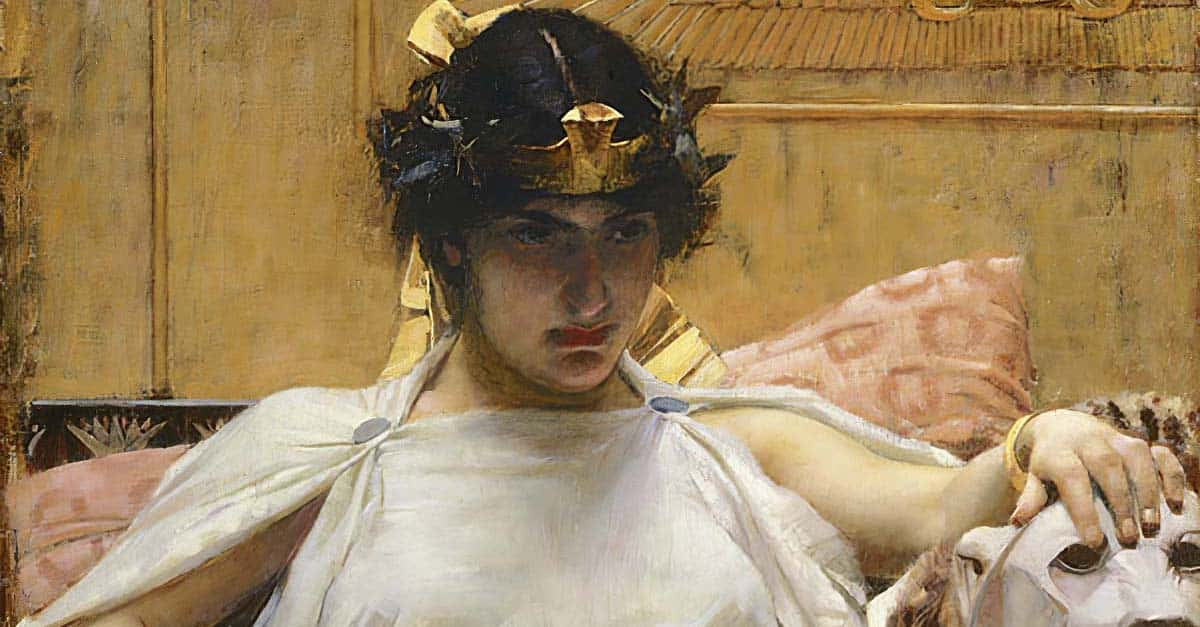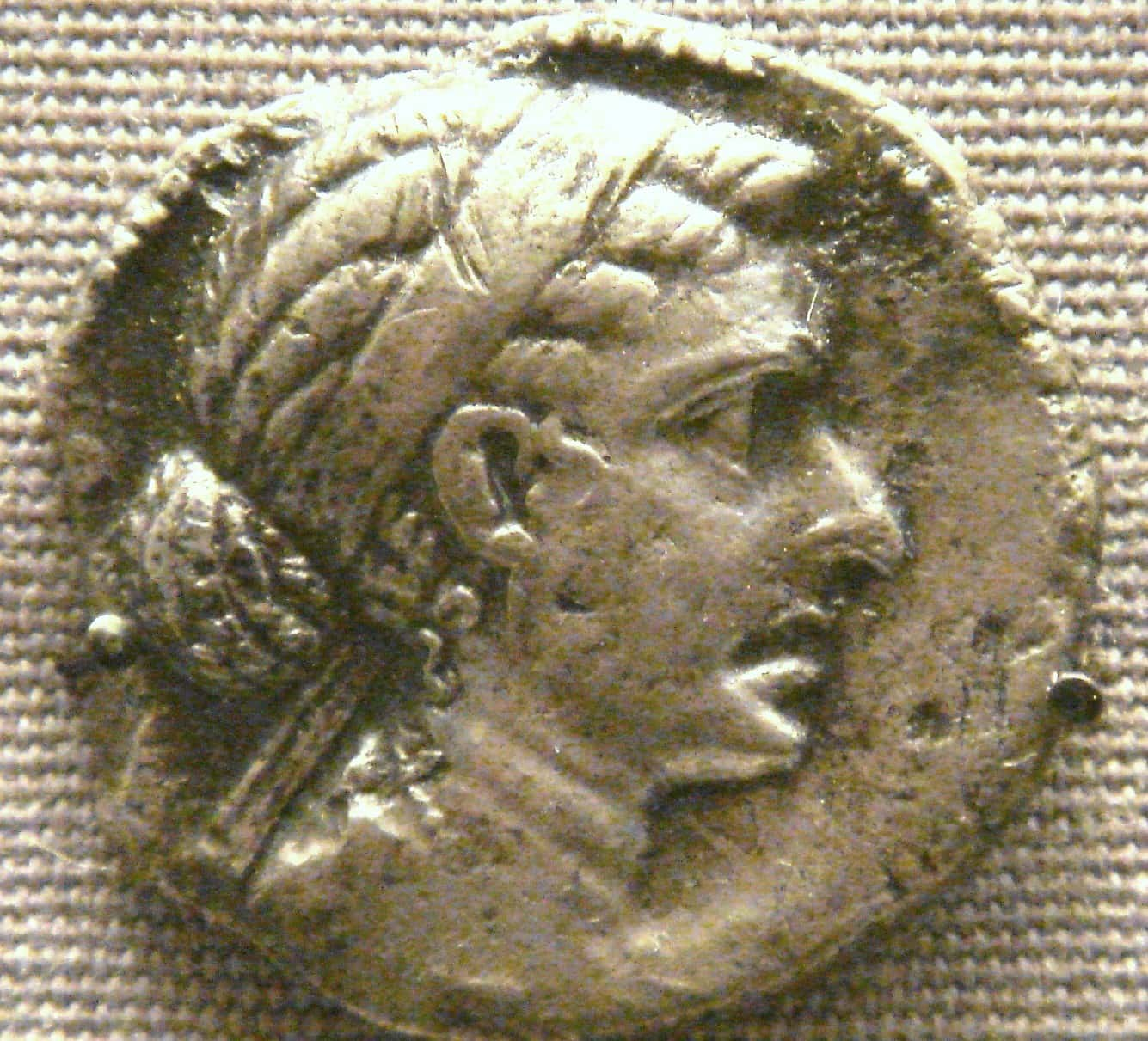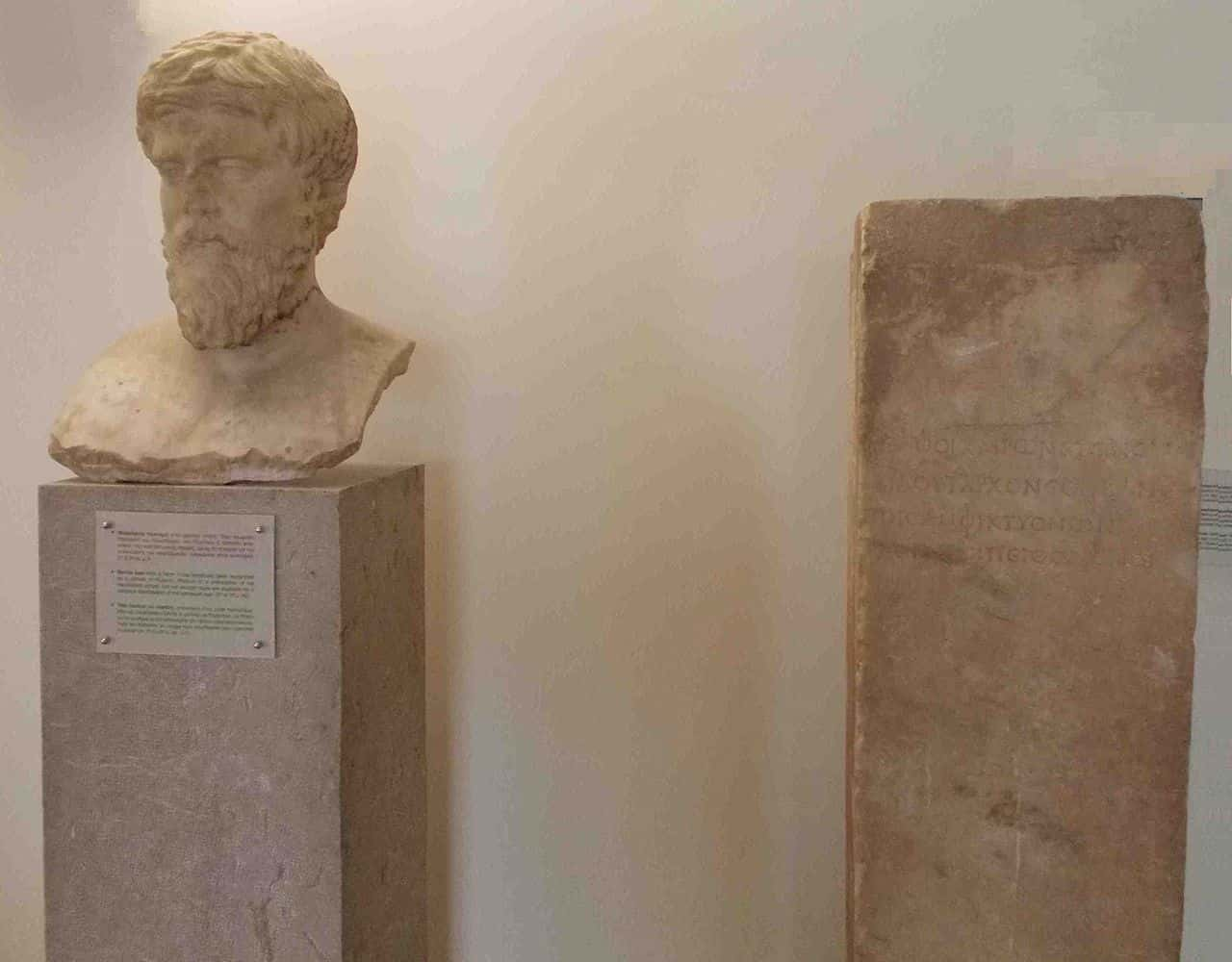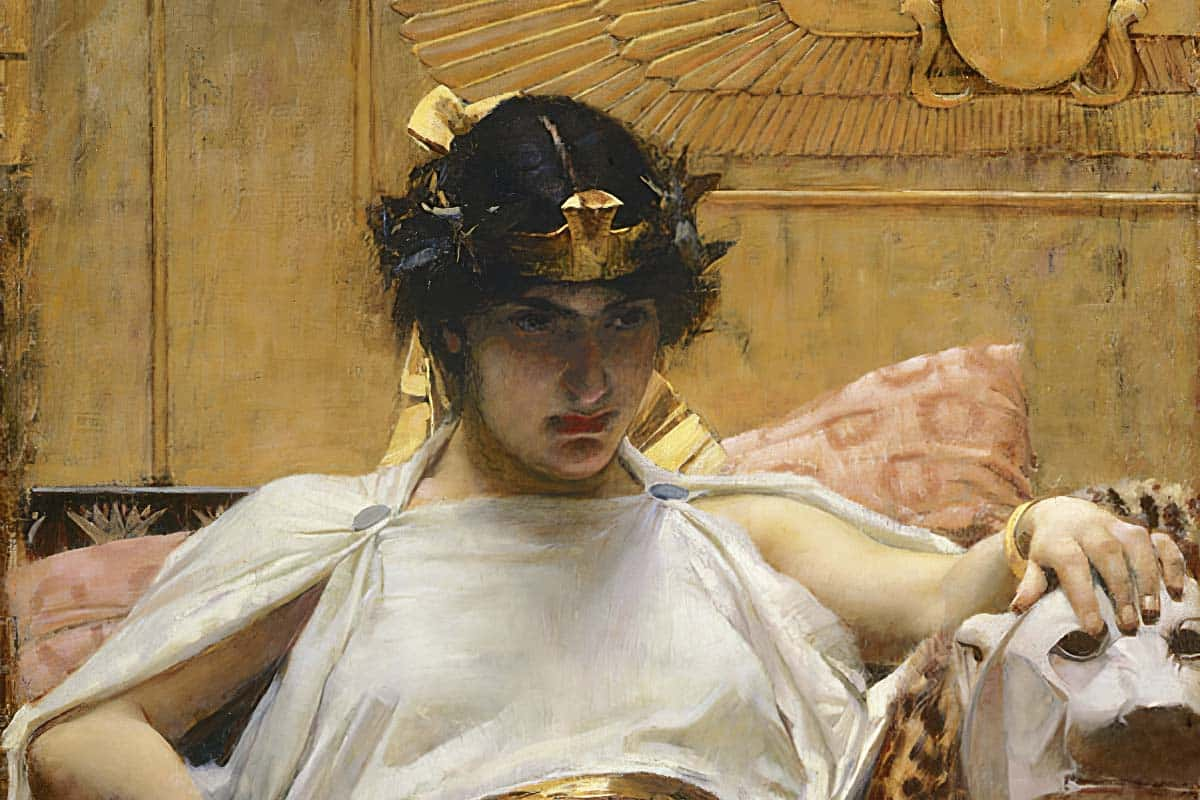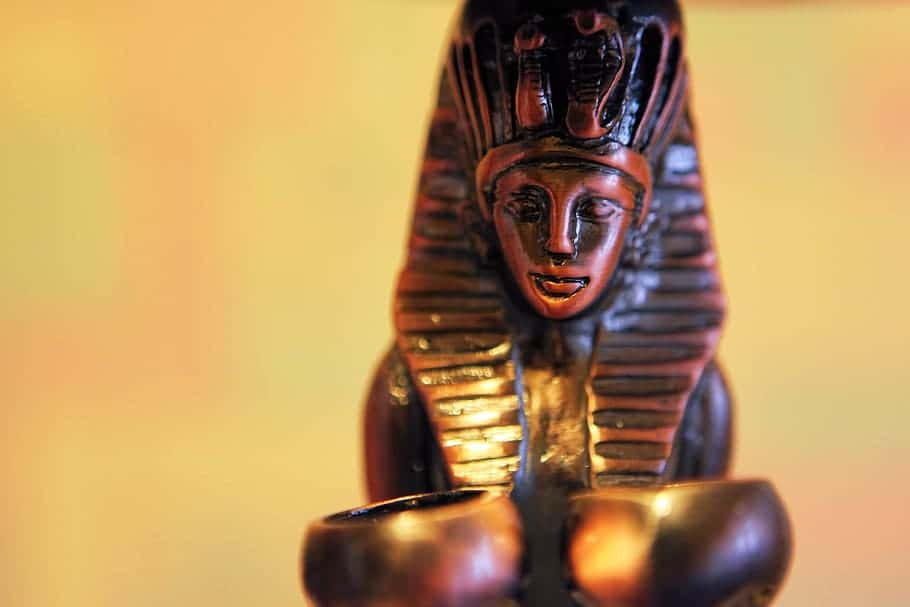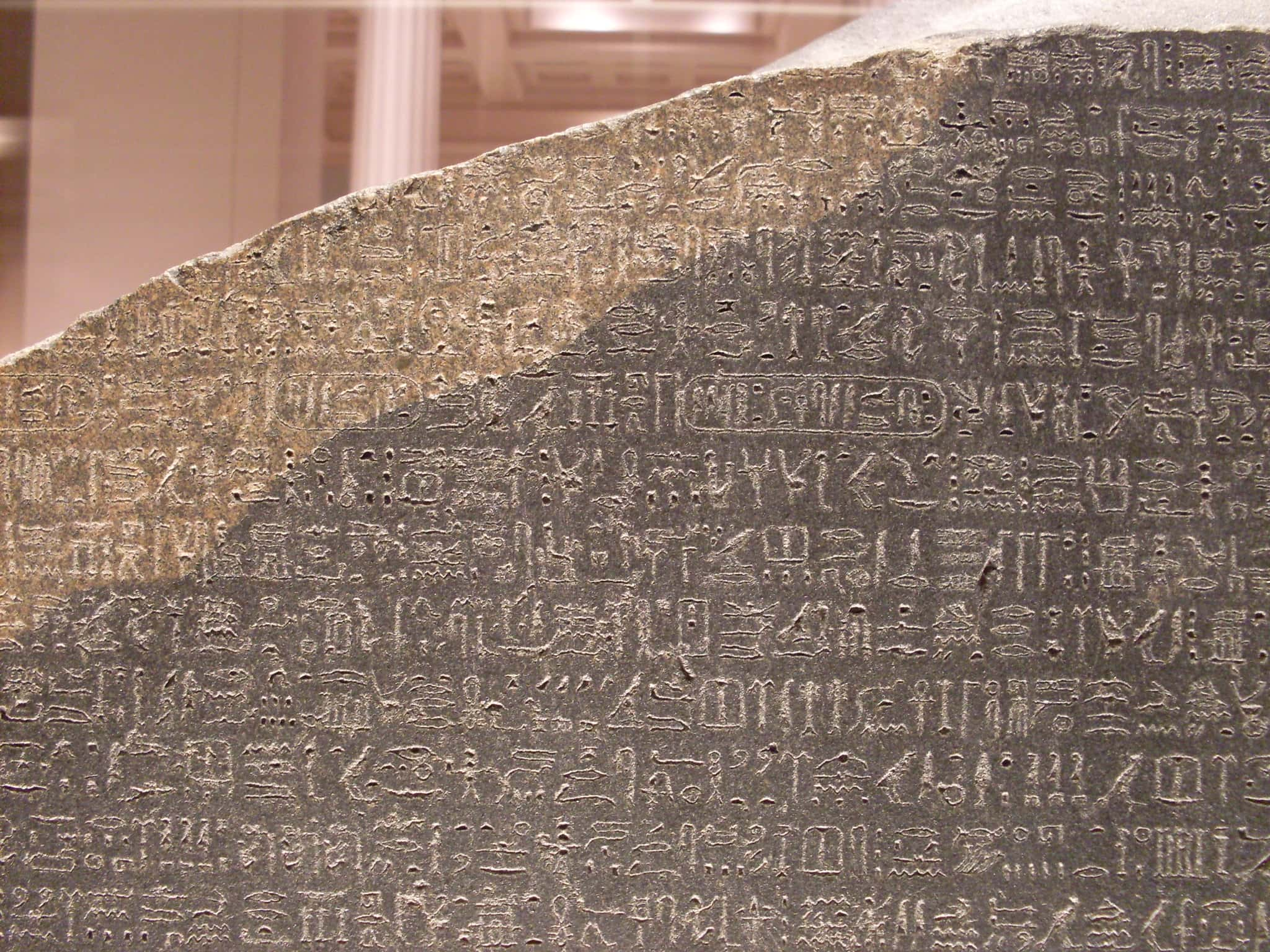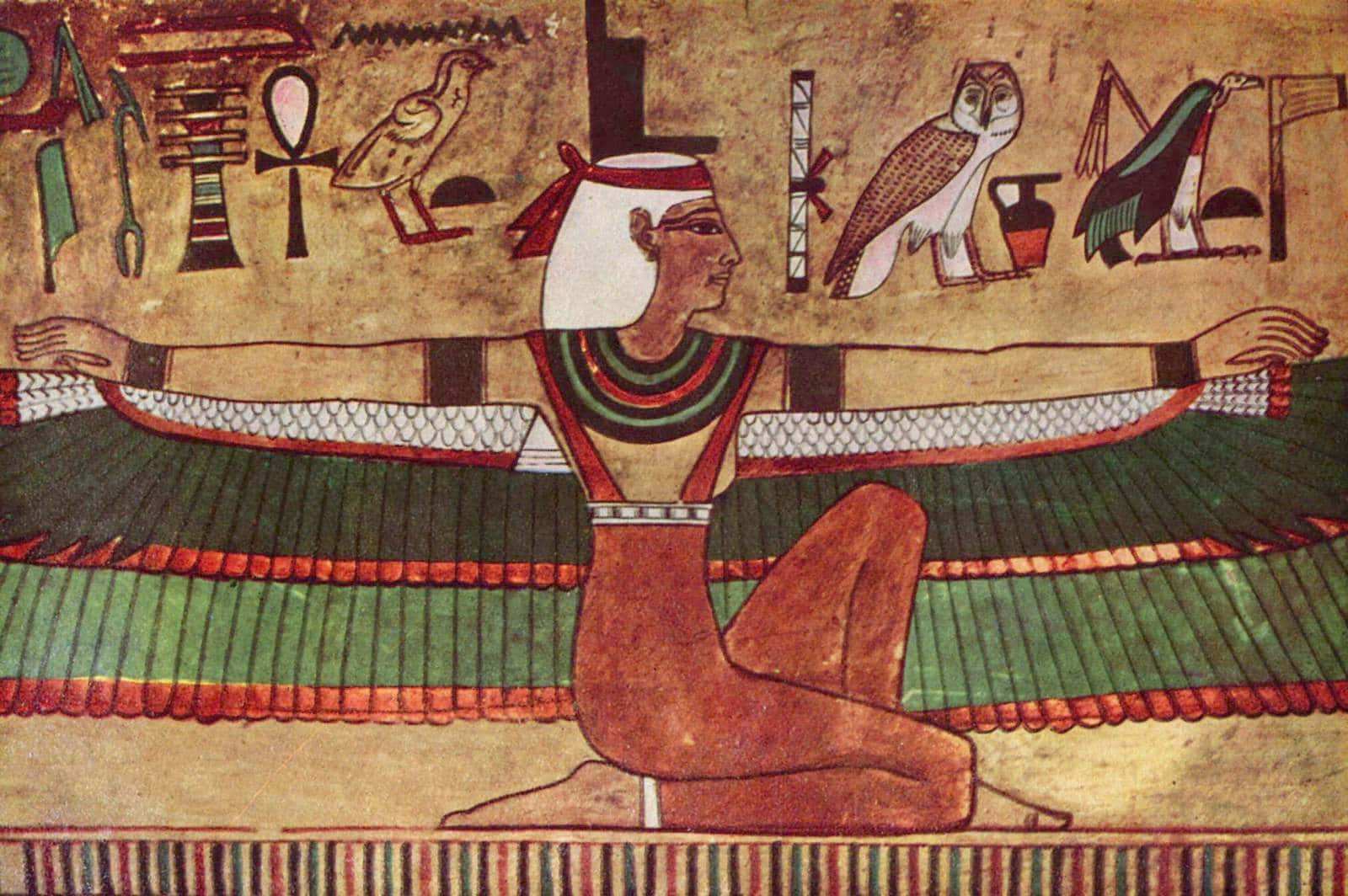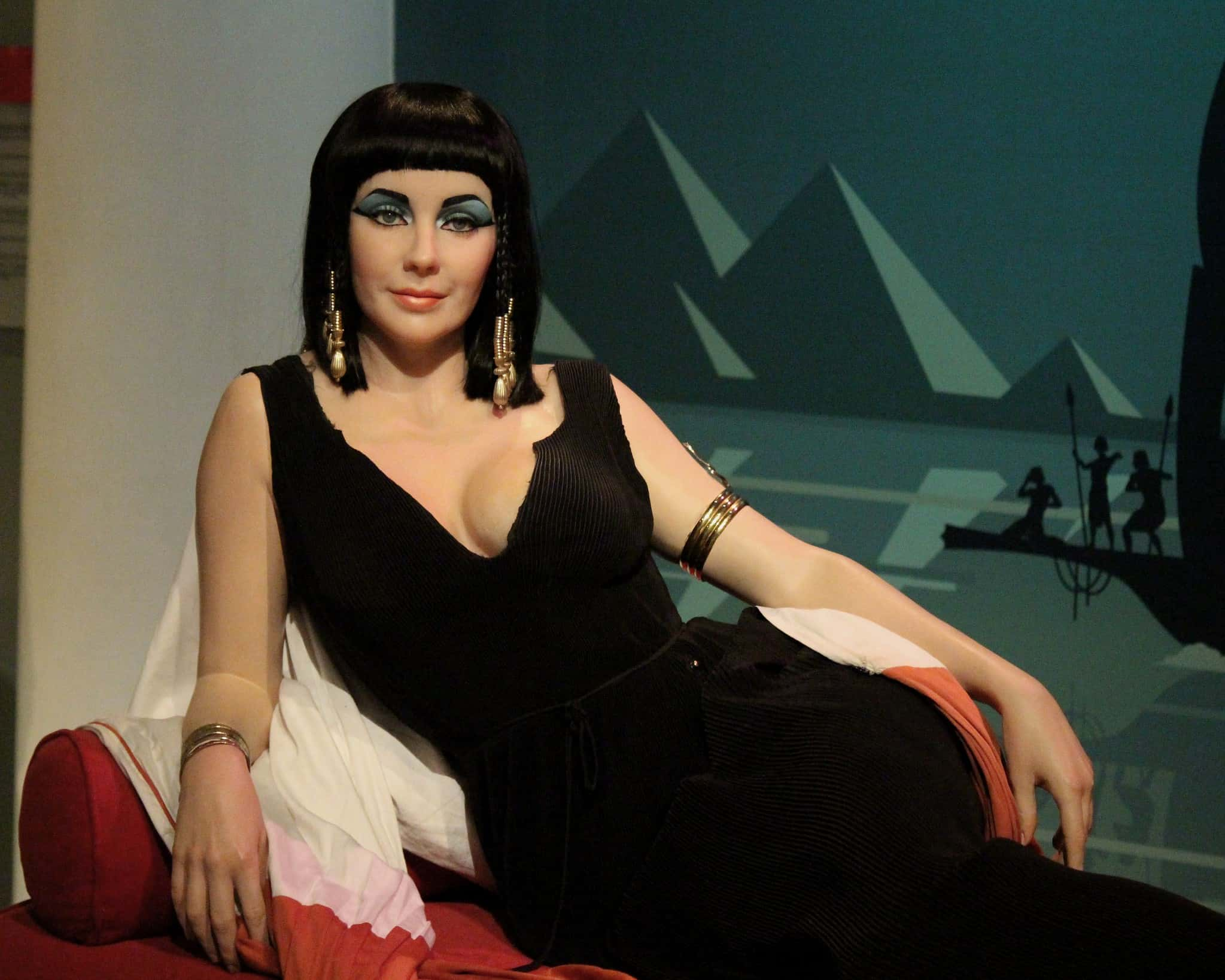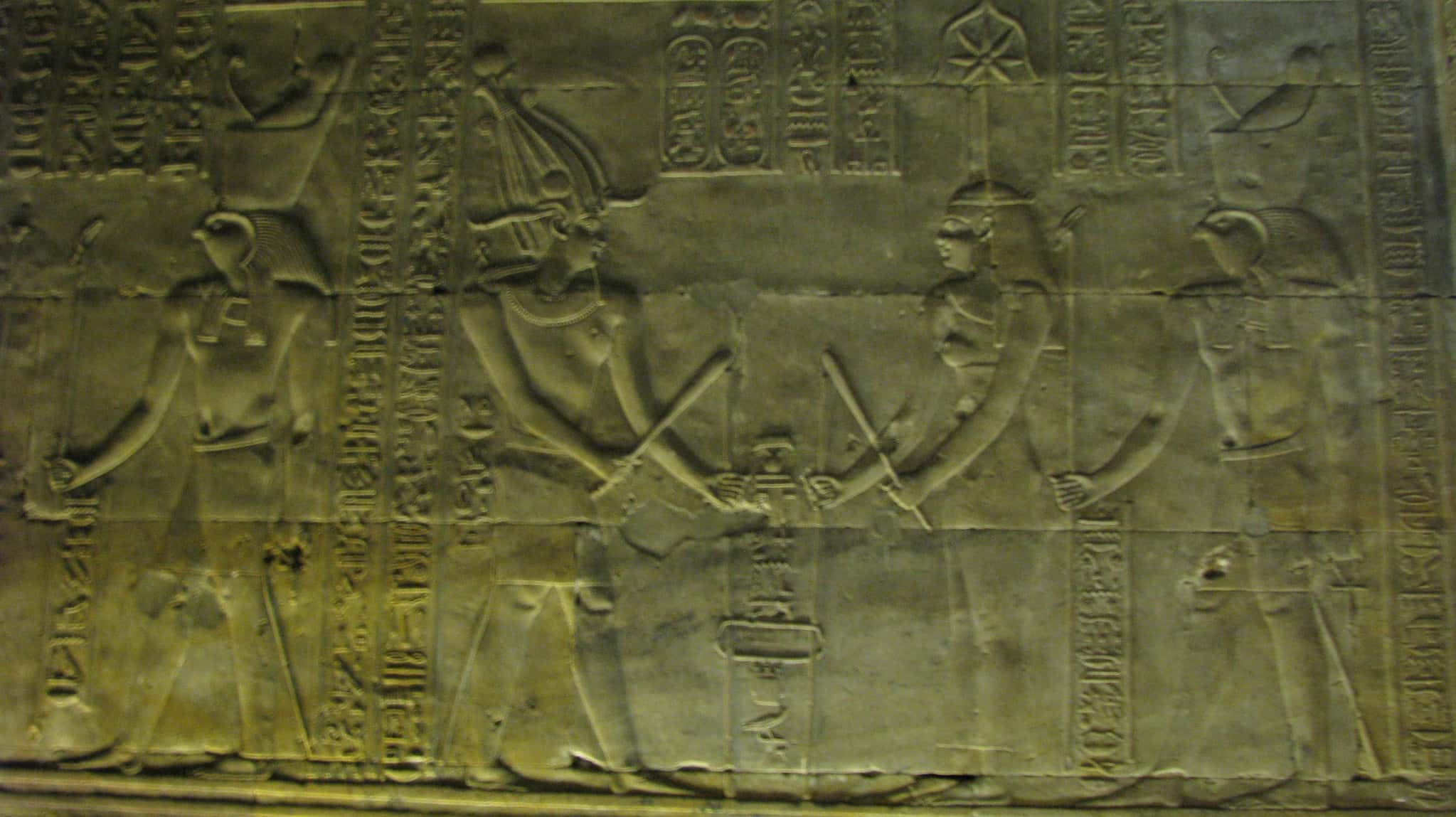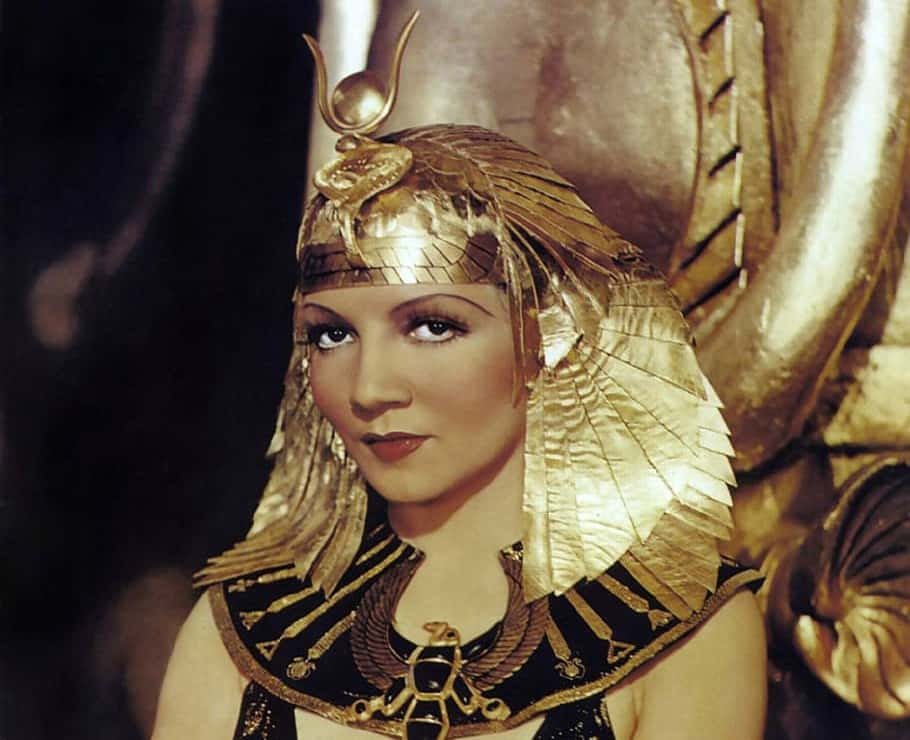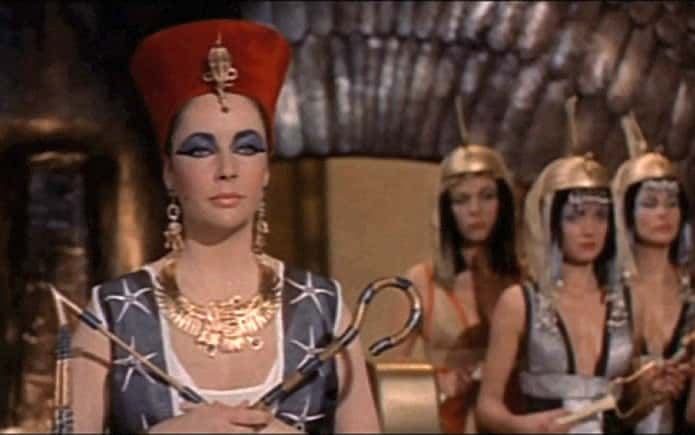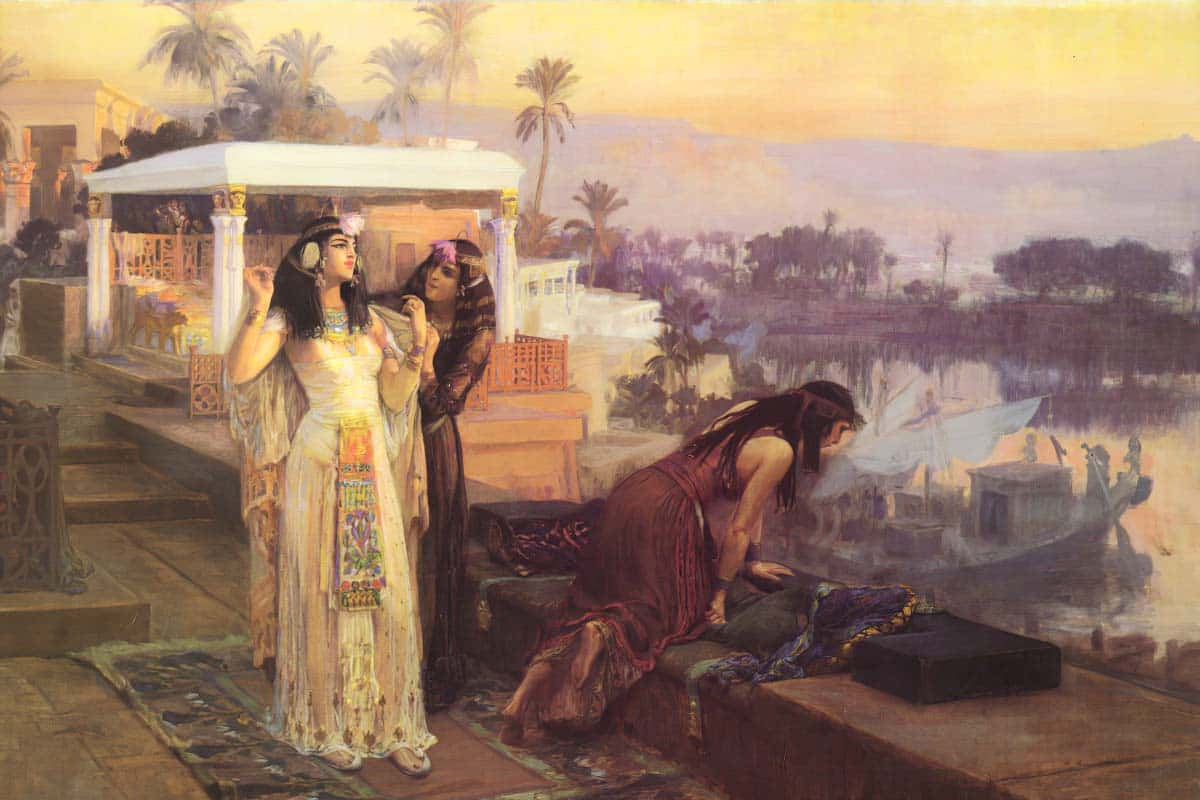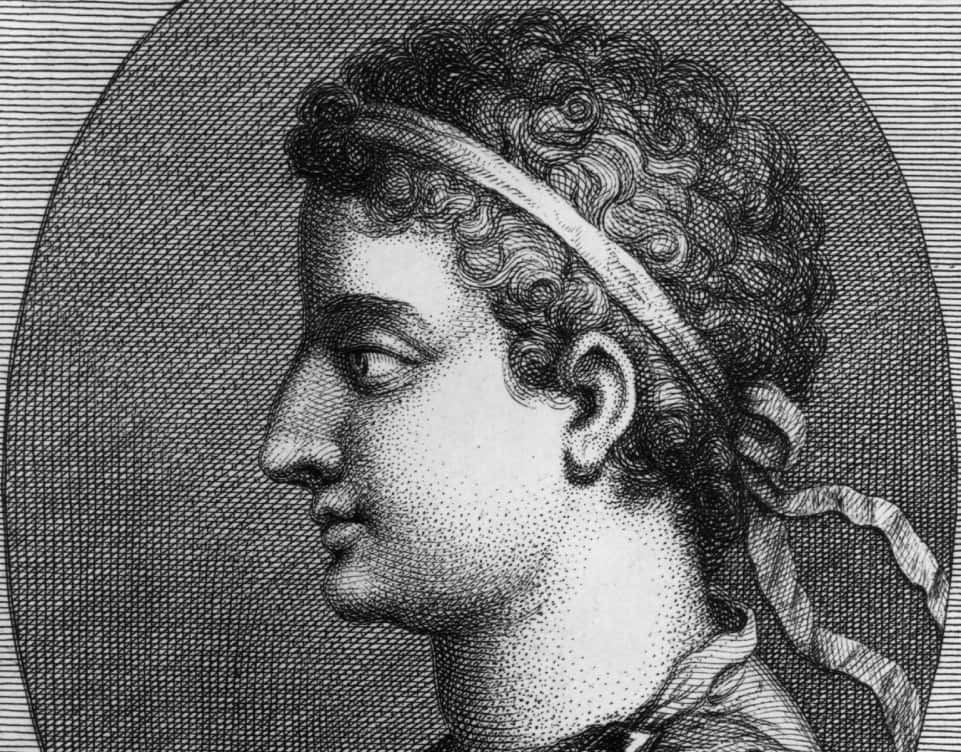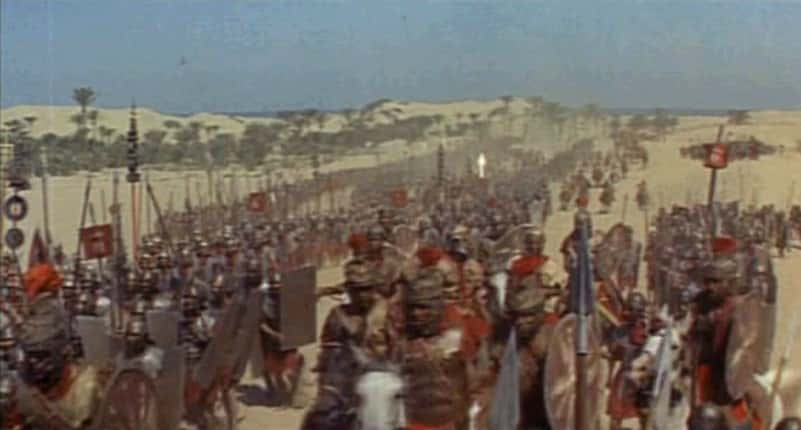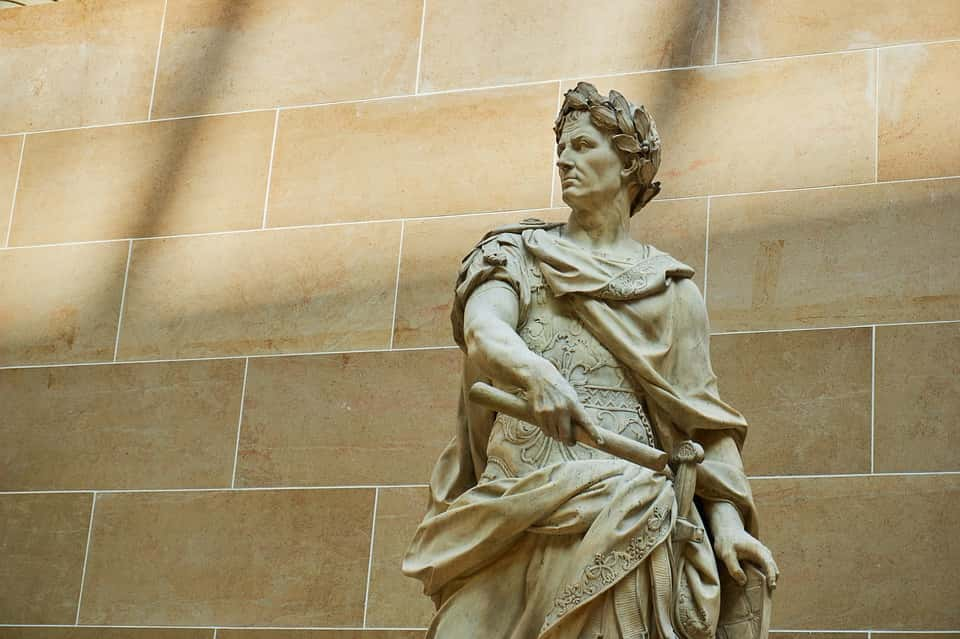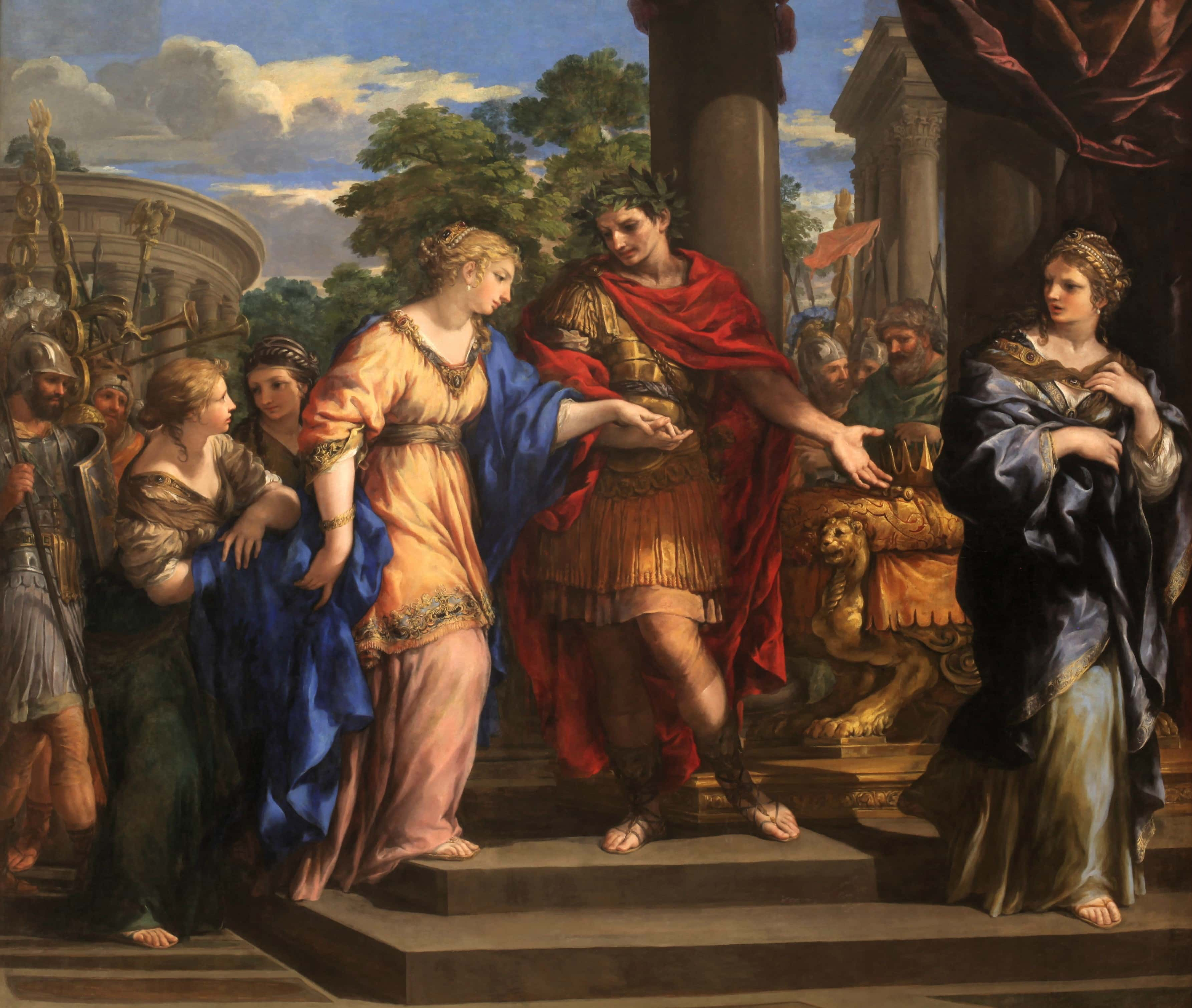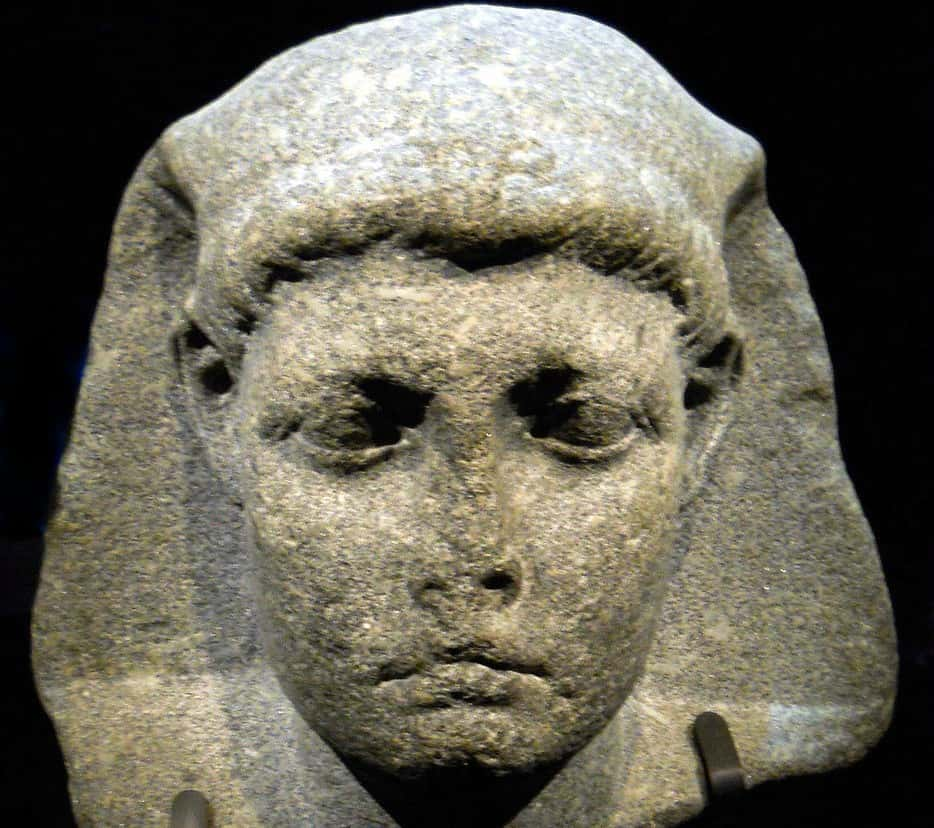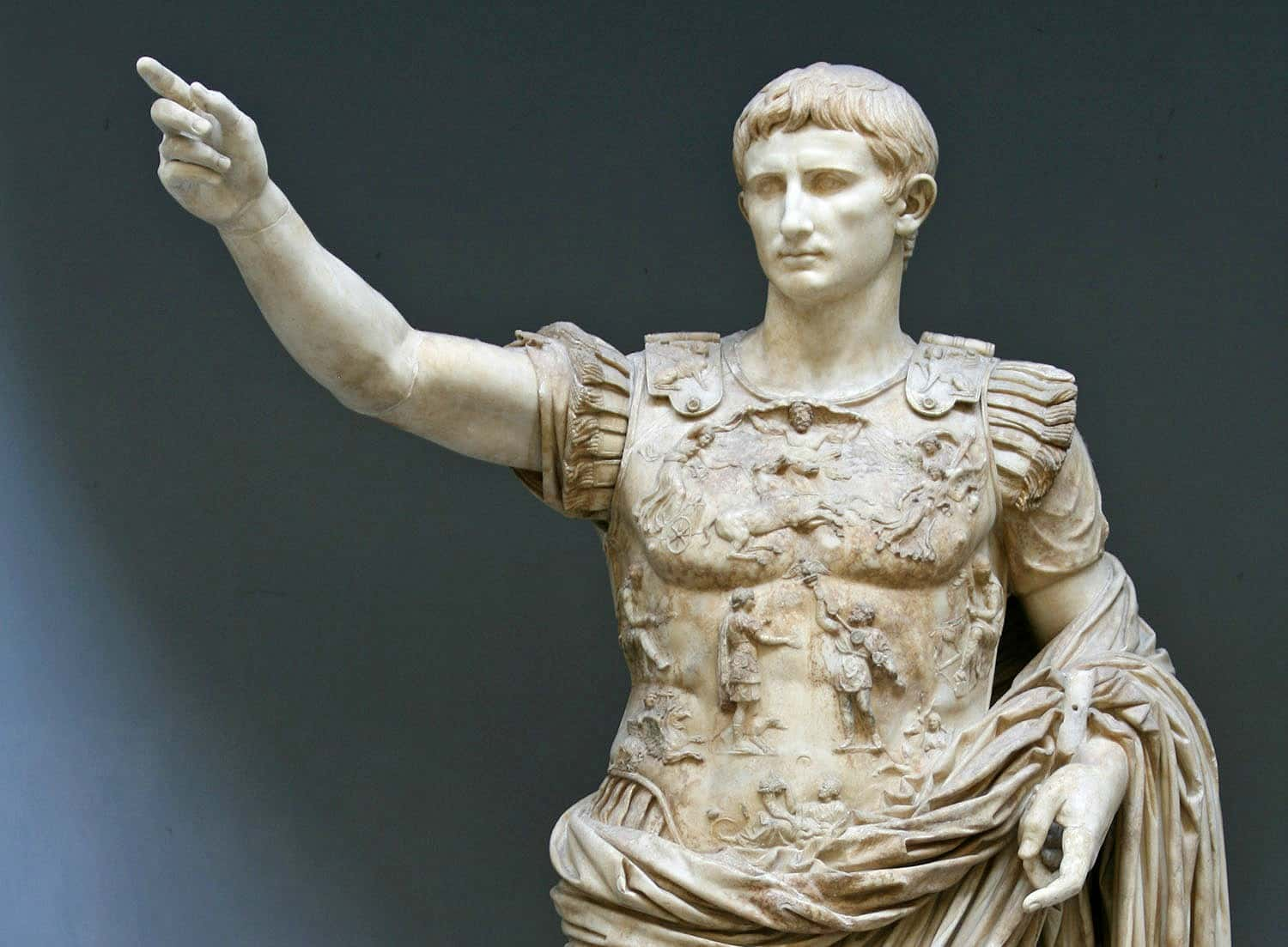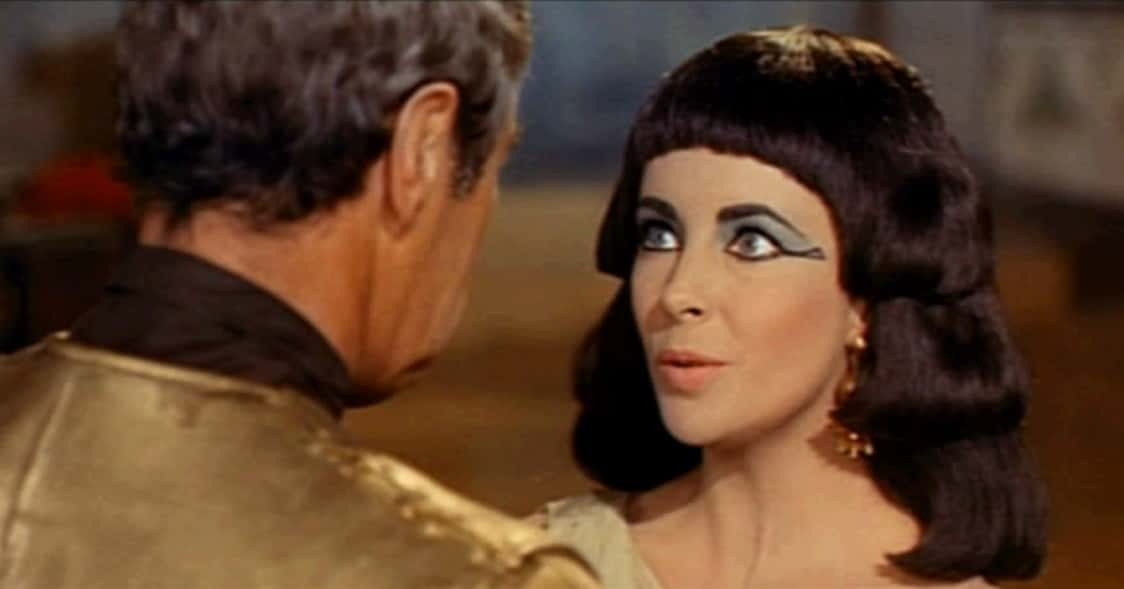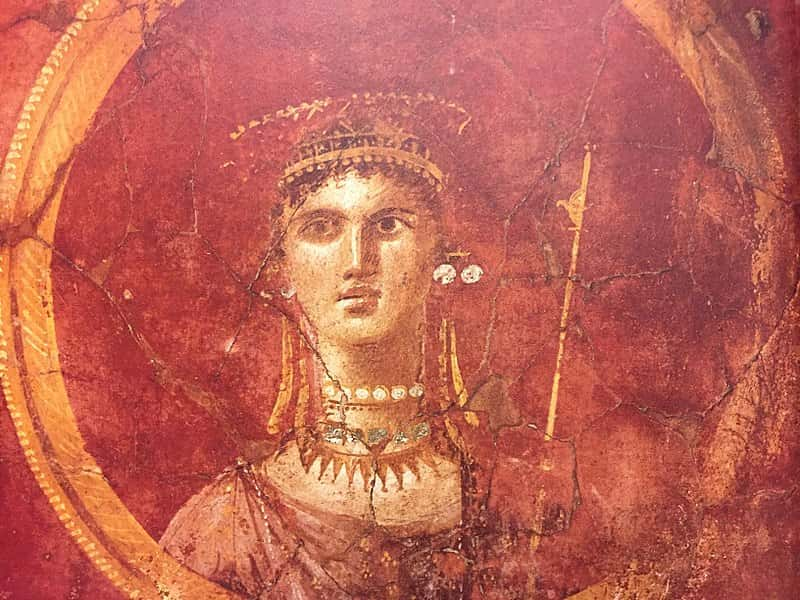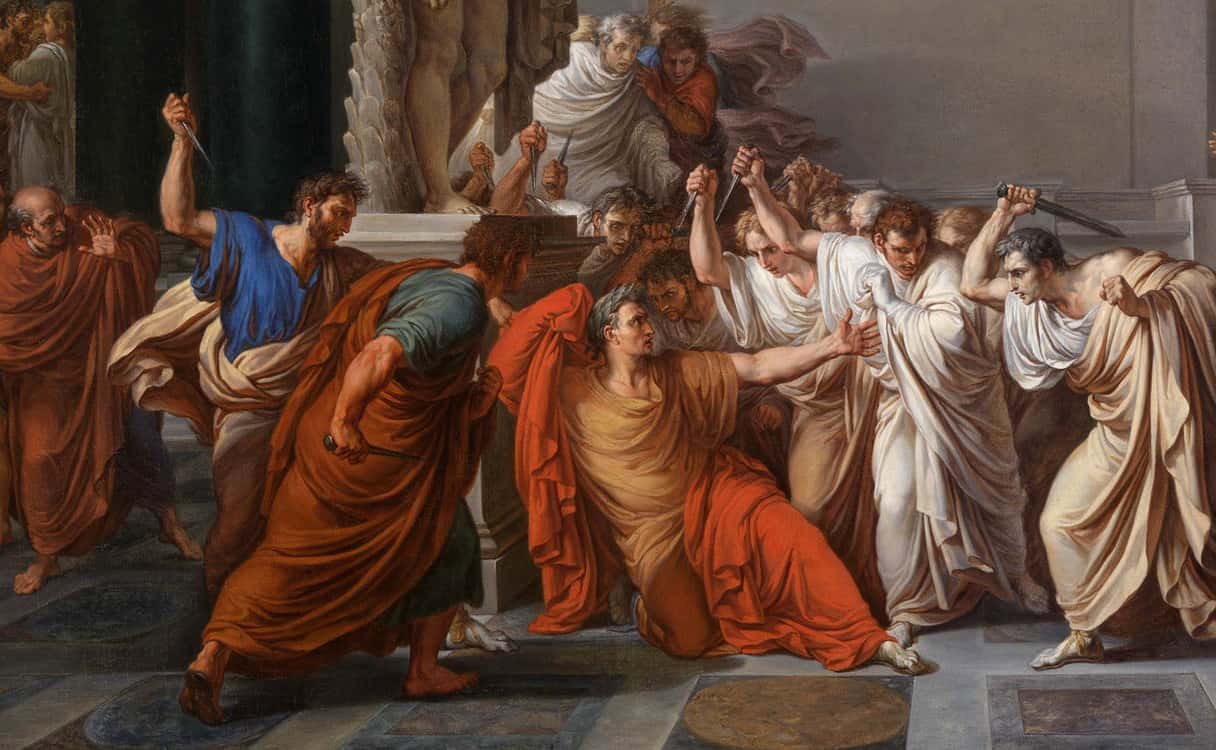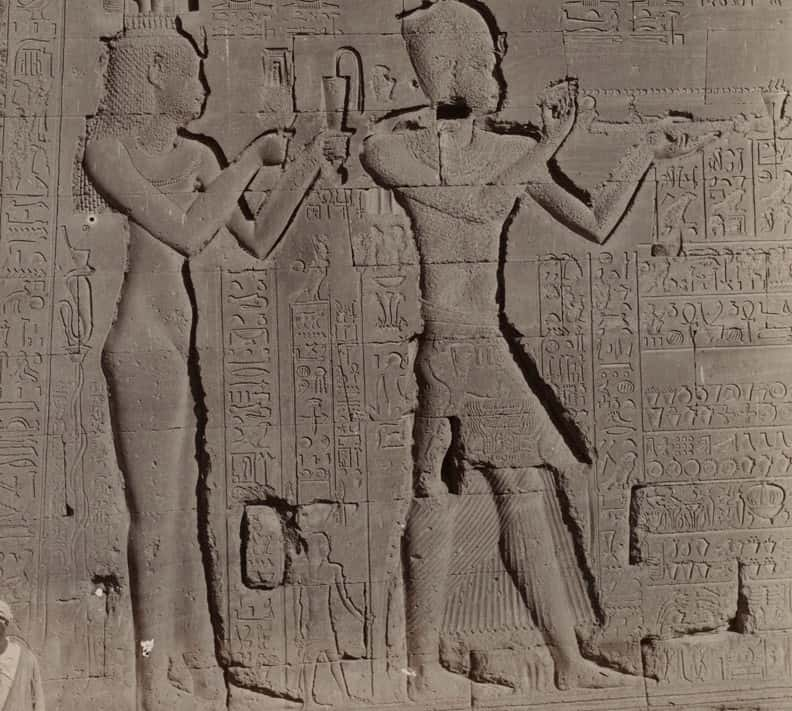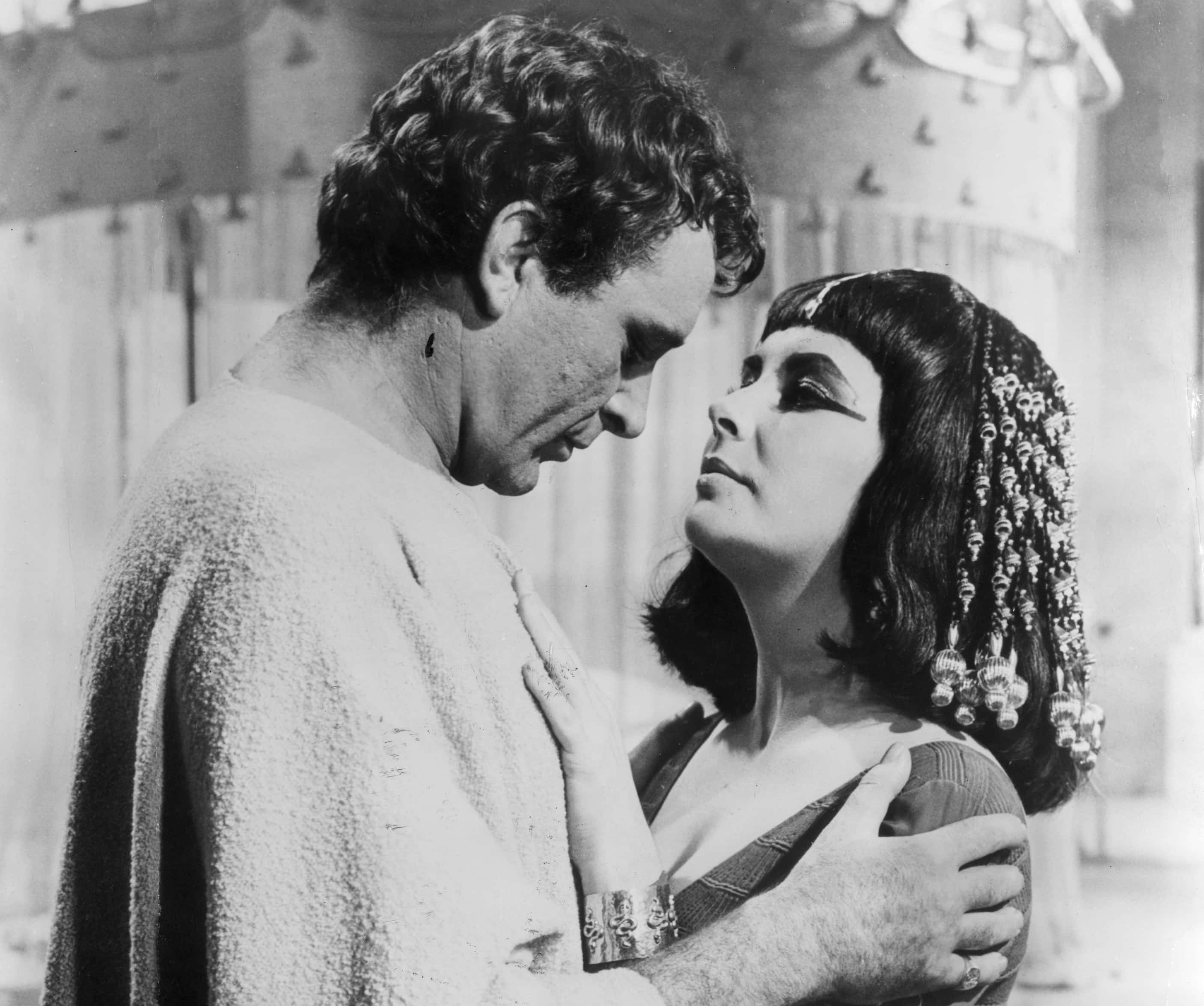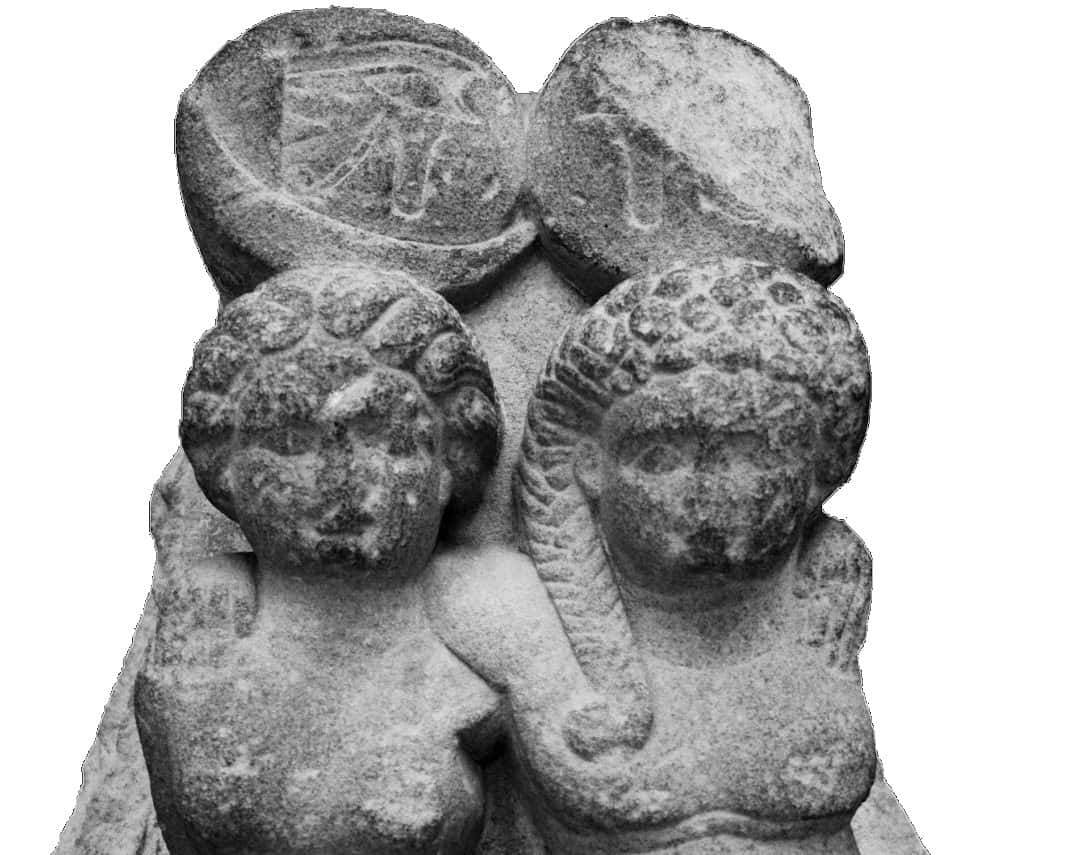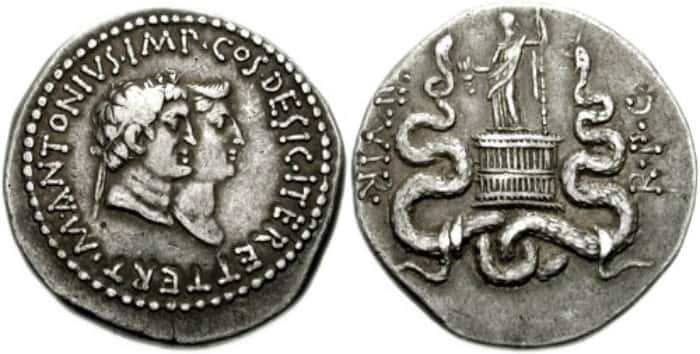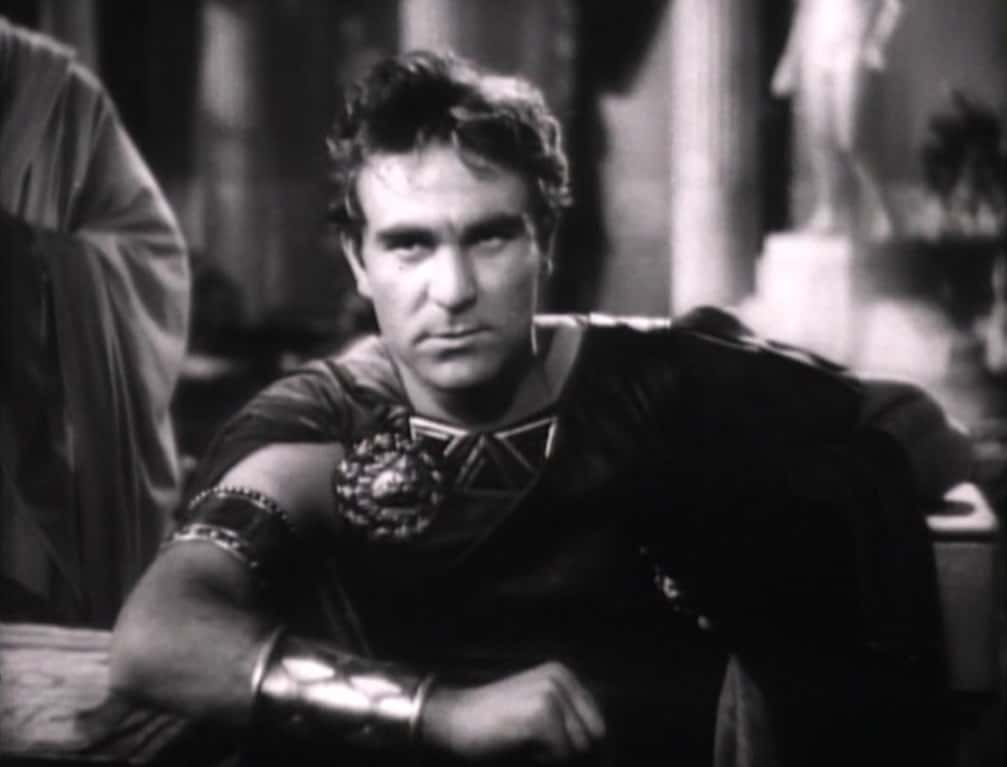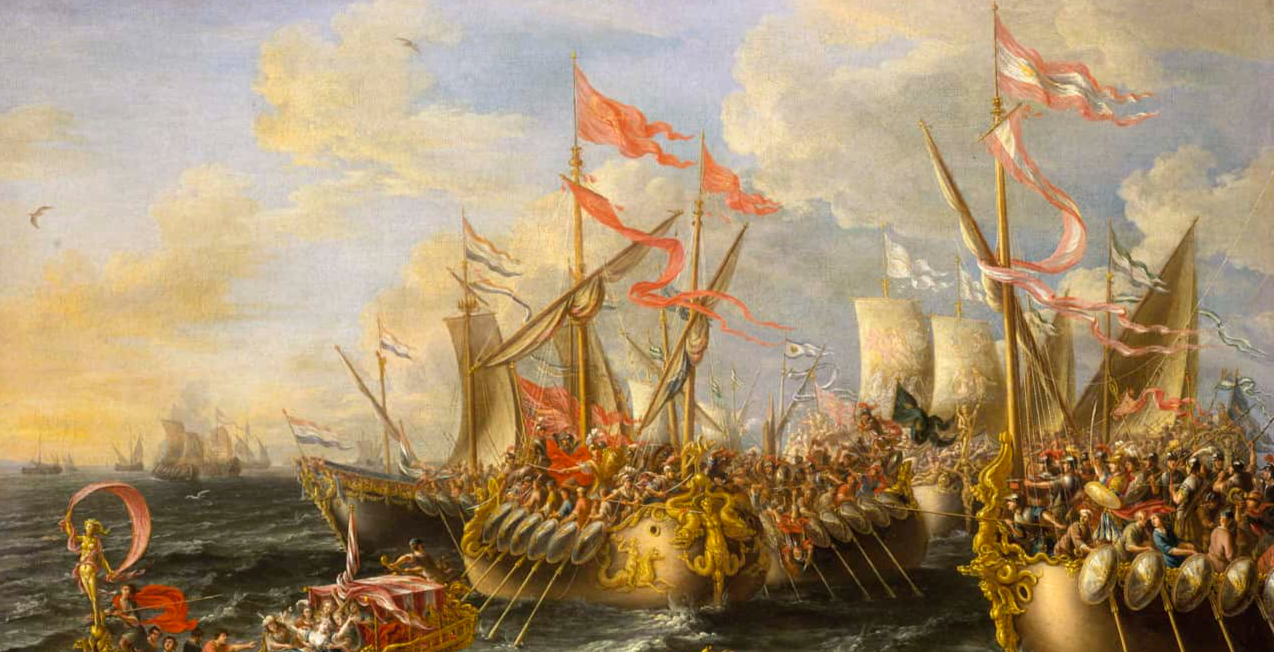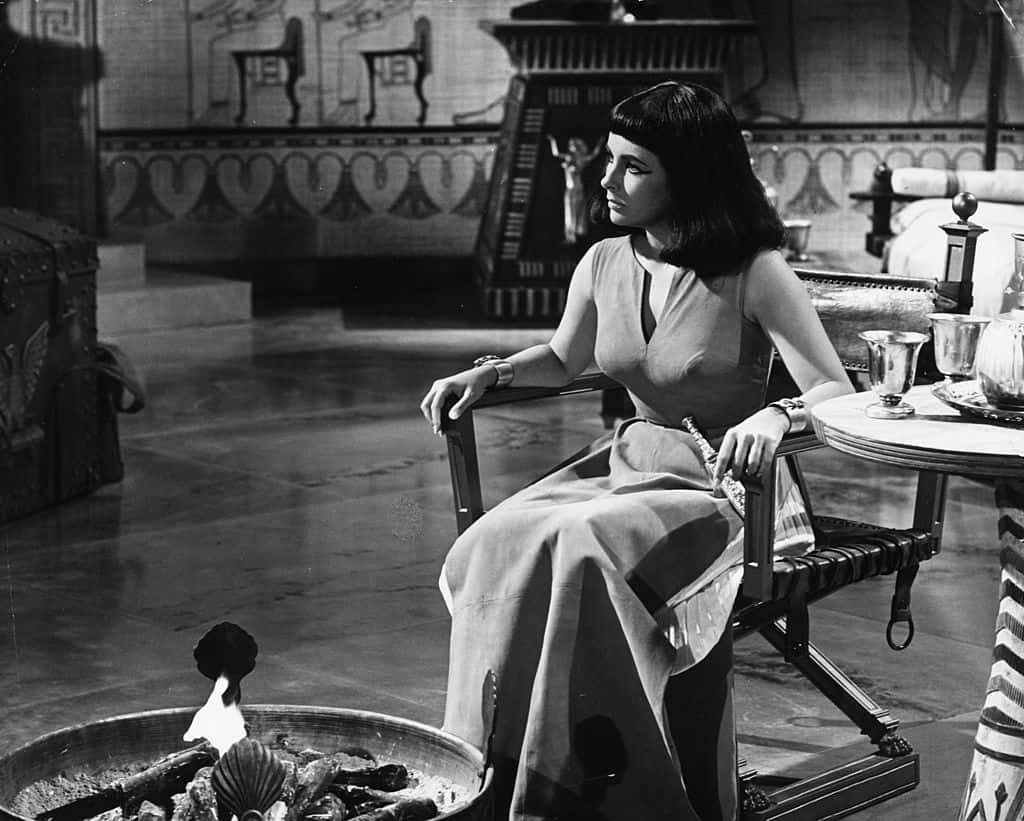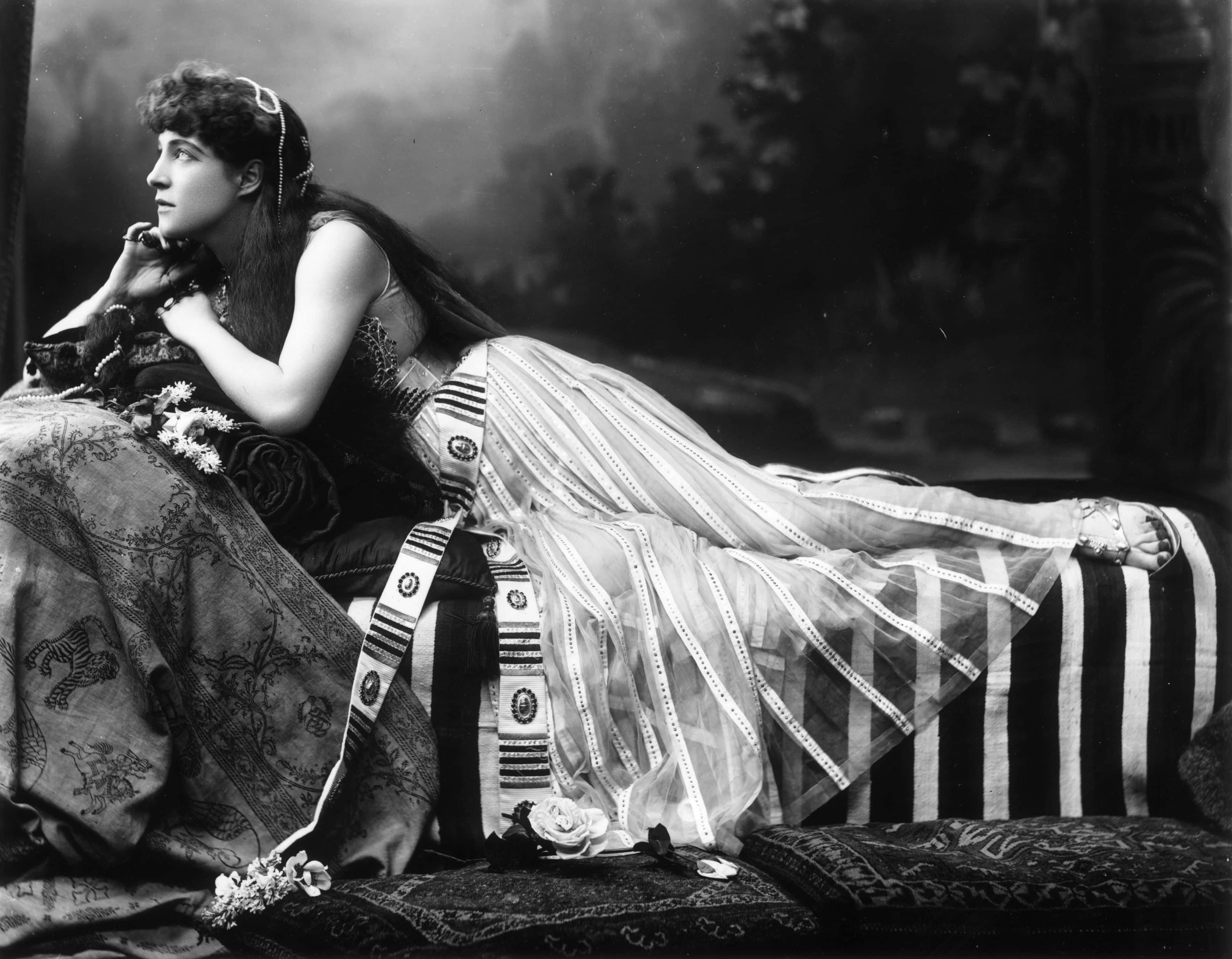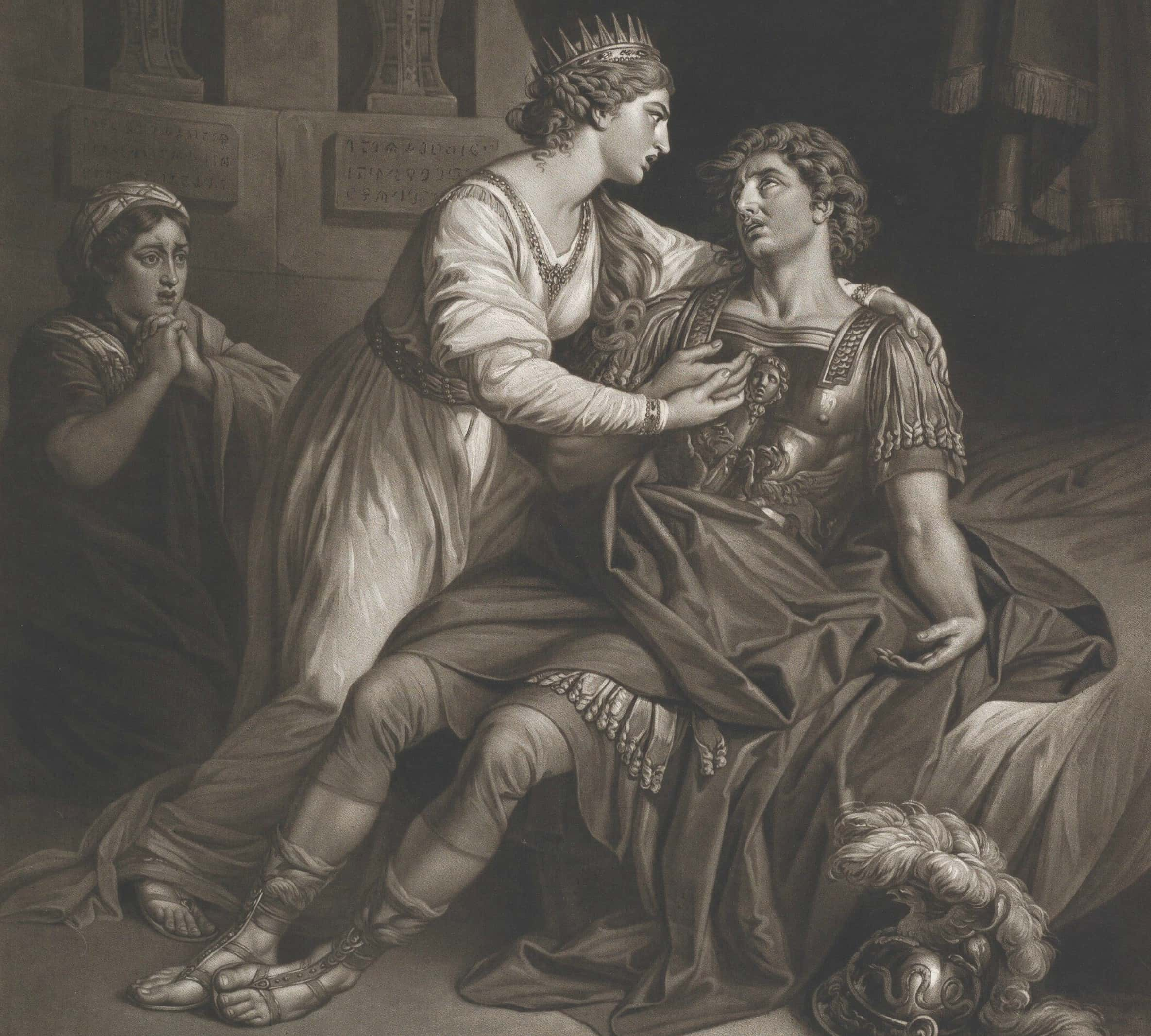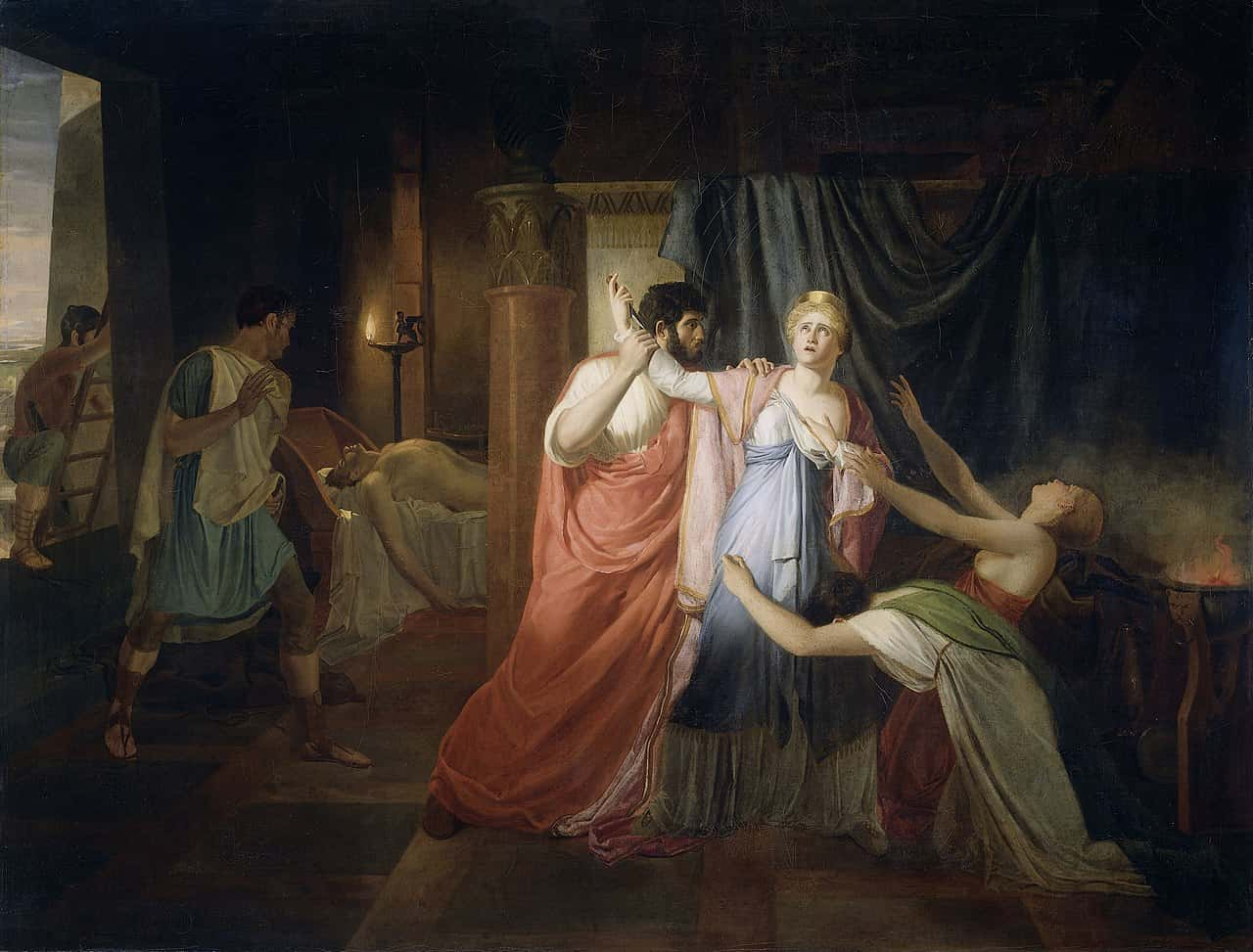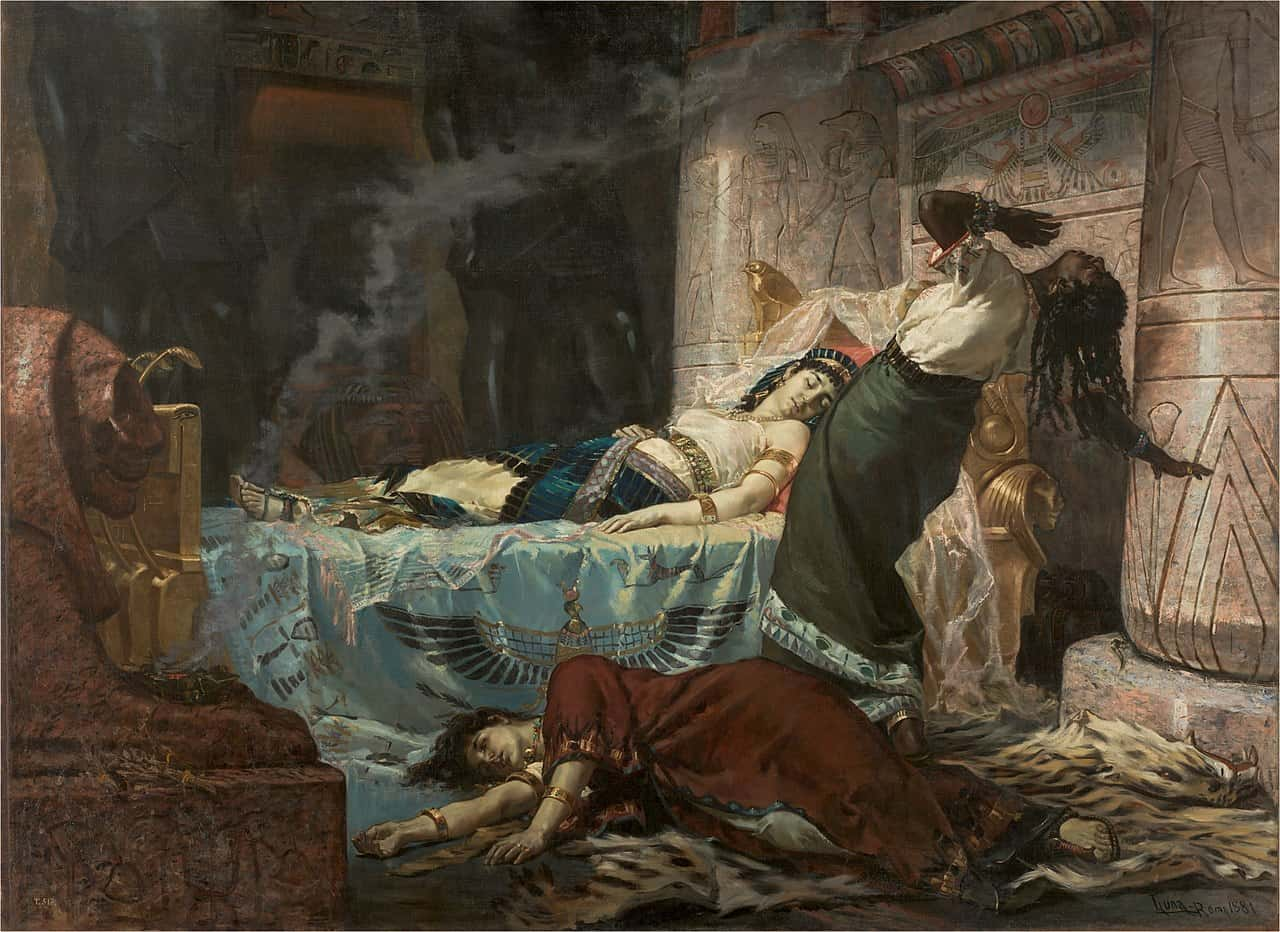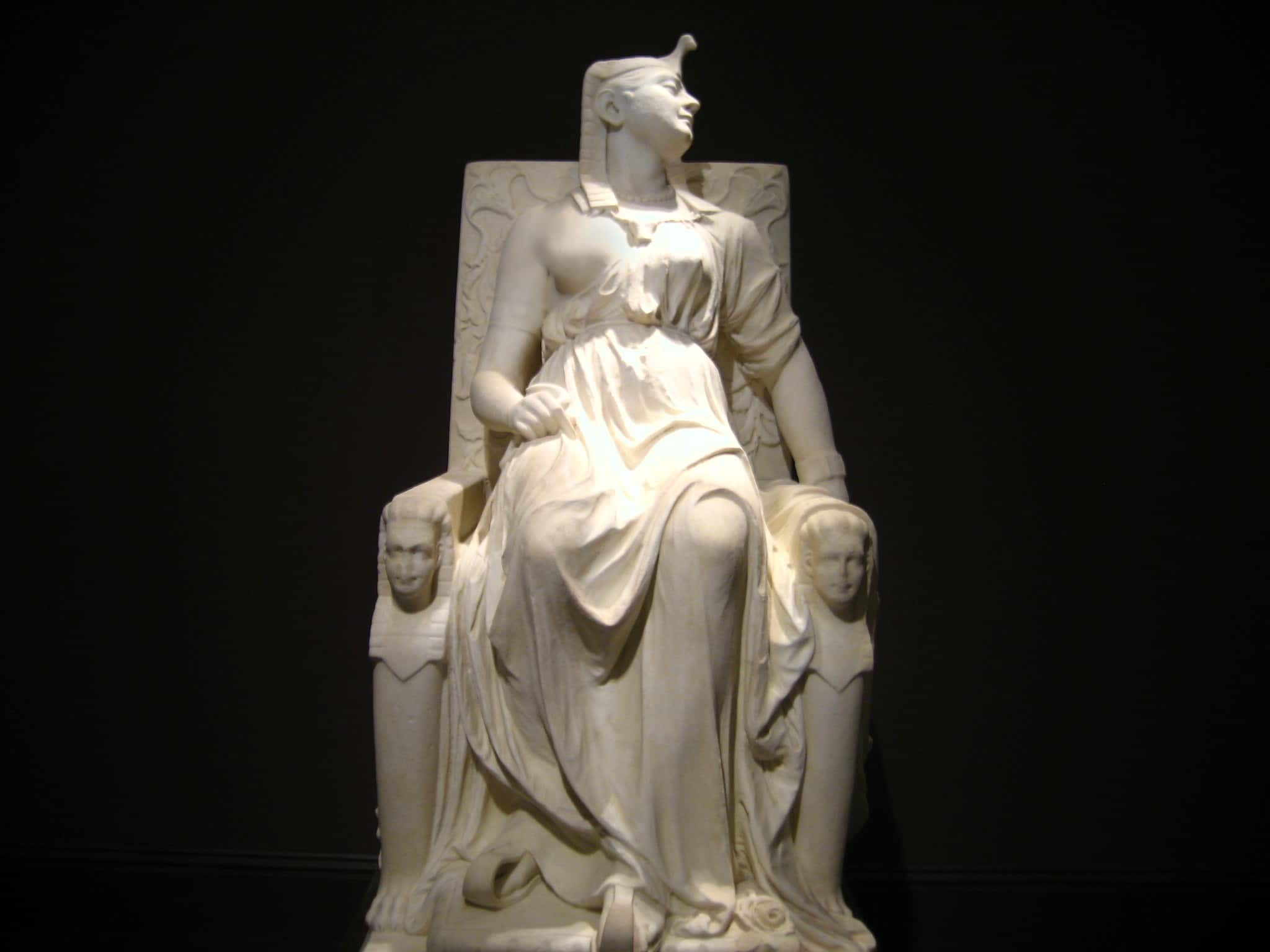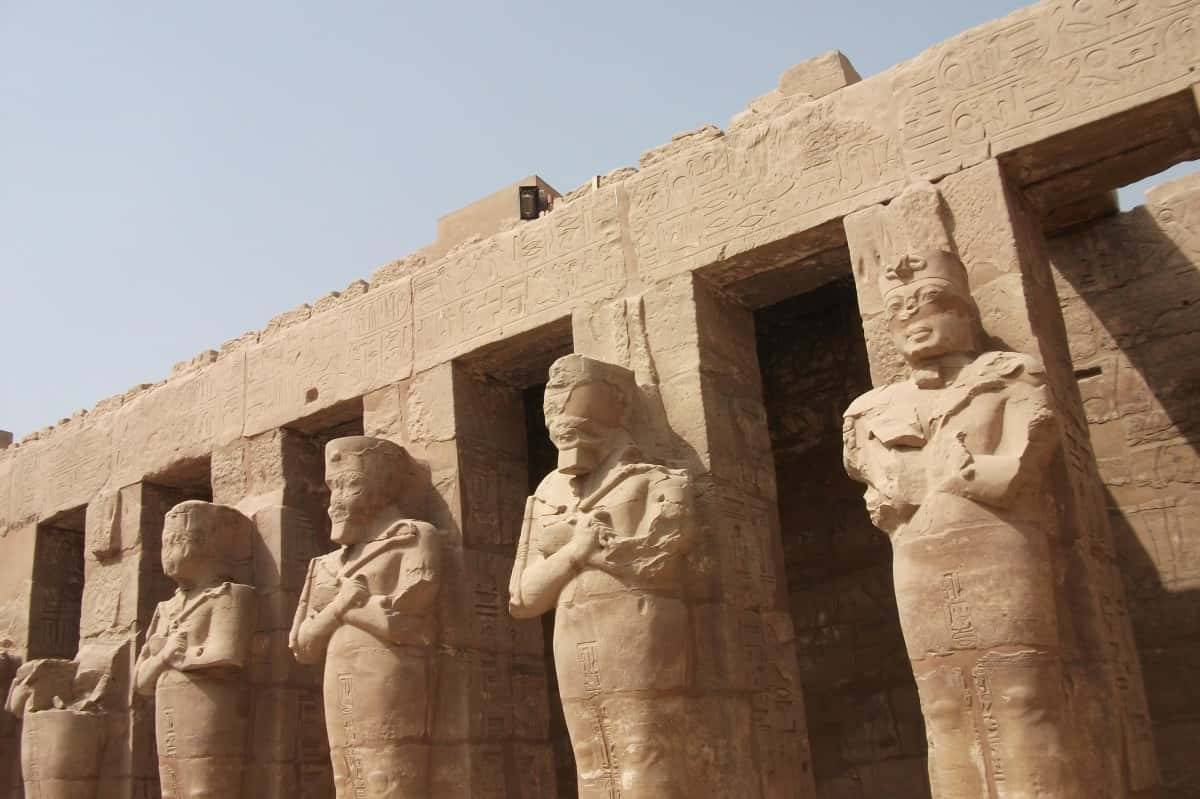Even today, over 2,000 years after her passing, Cleopatra remains one of history’s most intriguing and memorable women. And for good reason: her reign is rich in story and scandal. The Egyptian Queen commanded her own army, enamored not one but two Roman rulers, and inspired countless works of art, literature, and film. Her prowess as a ruler made her legendary, and the stories of her romances with Julius Caesar and Mark Antony made her unforgettable. Here are some dazzling facts about Cleopatra, Queen of the Nile.
1. Not The First
When you say "Cleopatra" in modern times, there’s only one Queen of the Nile most people think of, but Cleopatra was actually the seventh woman in the Ptolemaic dynasty to bear that name. She’s officially known as Cleopatra VII Philopater. The name “Cleopatra” (in Greek “Κλεοπάτρα”) means “she who comes from glorious father".
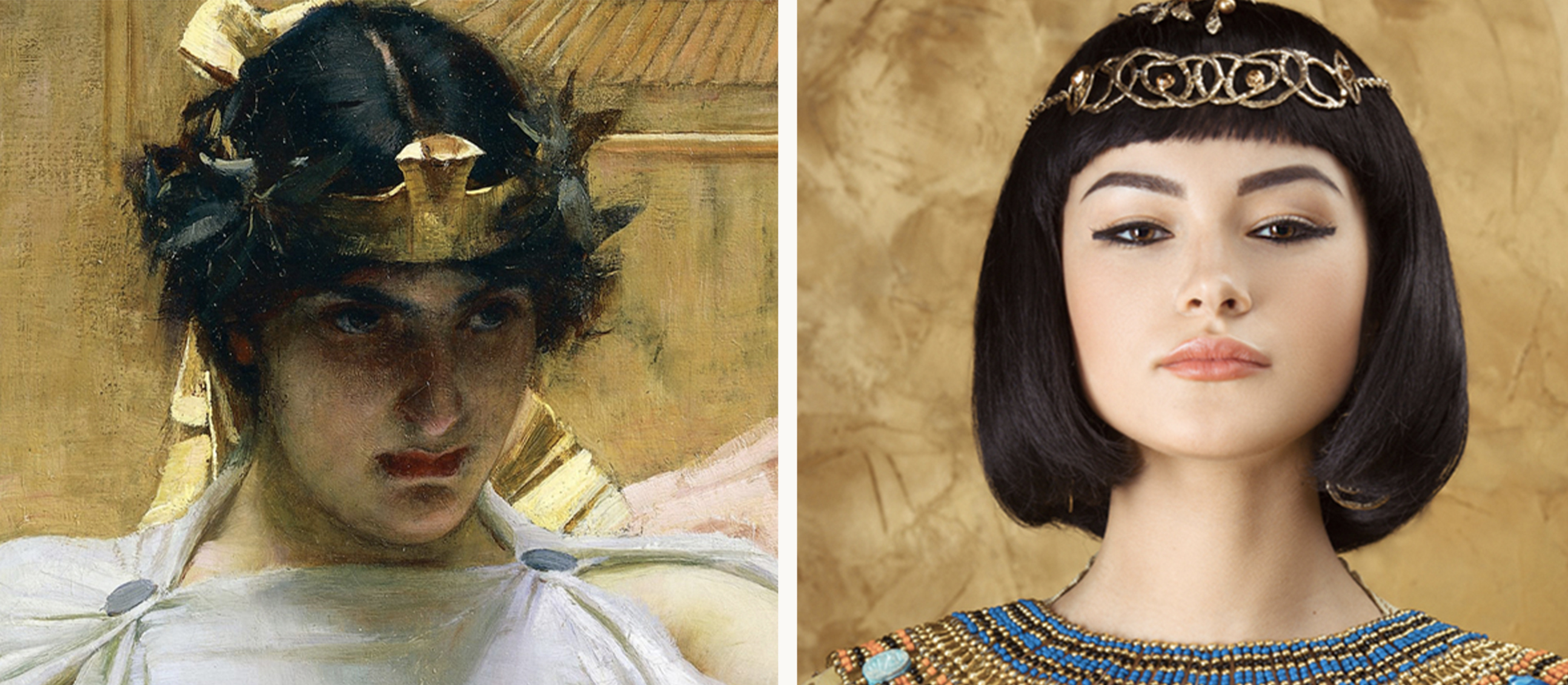
2. Foreign Influence
Why would an Egyptian queen bear a Greek name, you ask? Why, it’s because she was actually Greek. Cleopatra’s family, the Ptolemies, migrated to Egypt from Greece. So while Cleopatra was born in Egypt, she was, in fact, Macedonian Greek by origin.
3. The Beauty Myth
The name “Cleopatra” has become synonymous with exotic beauty and allure, but the real Cleopatra’s beauty was further down the list of her charms. Coins showing her face display a somewhat homely woman with a hooked nose. She likely made herself appear more masculine in looks and in manner in order to project a more powerful demeanor.
4. But Don’t Just Take Our Word For It
In fact, the historian Plutarch wrote that her looks were neither incomparable or striking. Ouch, man. However, he did say that it was the whole package—her wit, her charm, and (again, according to Plutarch) “sweetness in the tones of her voice” that made her so irresistible to everyone.
5. Smear Campaign
The reputation Cleopatra acquired as a brazen beauty and irresistible temptress isn't just a modern-day misconception—accounts from ancient Roman history depict Cleopatra using her feminine charms to bewitch and influence powerful men of the ancient world. Her wit and intelligence were often downplayed or overshadowed entirely by her sexiness in accounts written by her Roman critics.
6. Short Life, Big Mark
For all the mark she made on the world, Cleopatra only lived 39 years. She was born in 69 BC and took her own life in August of 30 BC—but more on that later. Her story is not important not just for her exploits, but also for the greater course of history. When Cleopatra was born in 69 BC, just over 2,100 years ago, it was at the end of the Egyptian Pharaoh dynasties and the beginning of a new phase in Egyptian history.
7. In Perspective
The era of the Pharaohs was almost incomprehensibly long—the first dynasty of Egypt began in 3100 BC—over 5,000 years ago. The Great Pyramids at Giza were constructed between 2550 to 2490 BC. This means that Cleopatra lived closer to the time of the Moon landing than she did to the construction of the pyramids.
8. Native Tongue
Cleopatra was the first Ptolemaic ruler who learned to speak and write in Egyptian. For 300 years, her family spoke only Greek, so court documents, including the Rosetta stone, were bilingual—written in both in Greek and Egyptian. That means that for those 300 years, the person ruling the Egyptians didn’t even speak their language.
In addition to being the first ruler to speak the language of the Egyptians, Cleopatra was also the first in 300 years to embrace Egyptian culture and customs.
9. Taking It Even Further
This included worshipping traditional Egyptian gods rather than those of the Greek religion Cleopatra was never one to be casual about anything, and she took this practice to extreme lengths. Cleopatra not only adopted the Egyptian religion and worshiped traditional Egyptian gods, she actually believed she was one of them.
Cleopatra fancied herself the reincarnation of the Egyptian goddess Isis.

History's most fascinating stories and darkest secrets, delivered to your inbox daily.
10. Pearls Before Romans
Cleopatra's last lover before her demise was Mark Antony, the Roman politician and general. The pair loved playing games and pranks with one another, and one in particular has become the stuff of legend. In one of Antony and Cleopatra’s elaborate contests, she bet him that she could throw the most expensive dinner in history. After an unremarkable first course, Antony mocked her attempt. He had no idea what was coming next.
11. Expensive Hobby
When Mark Antony was served his second course, he was shocked to discover that his dish contained only strong vinegar. Cleopatra plucked a priceless pearl from her earrings and dropped it into the vinegar. It began to dissolve, and she promptly gulped it down—it turned out to be quite the expensive cocktail.
12. That Had to Be a Huge Pearl
The other earring was cut in two, and each half was used to adorn the sculpture of Venus in the Pantheon. This story was told by the historian Pliny the Elder in his Natural History, written in 79 AD. According to his estimate, the pearls were worth 60 million sestertii—roughly $28.5 million dollars today.
13. Close Relations
Cleopatra was born in 39 BC to father Pharaoh Ptolemy XII. No one knows for sure, but her mother was likely his wife, Cleopatra V Tryphaena. As a custom amongst royalty at the time was to intermarry in order to consolidate power and money within families, her parents were likely siblings or close cousins—a disturbing custom that Cleopatra herself would become subject to.
14. Young Queen
When Cleopatra was 14, tragedy struck. Her mother passed on under mysterious circumstances. Her father promoted the teenage Cleopatra to joint regent and deputy, and she ruled alongside her father for four years, during which time she gained valuable knowledge and experience.
15. Keeping it in the Family
It's a good thing that Cleopatra had this experience under her belt because when her father Pharaoh Ptolemy XII passed on, she was more than prepared. In his will, he made 18-year-old Cleopatra and her 10-year-old brother joint rulers. More than a little annoying, since she'd already been working alongside her father for years, but that wasn't the worst part.
As per custom, she was then forced to marry her younger brother.
16. Sibling Rivalry
Within months of taking the throne, Cleopatra made it clear she had no interest in sharing power with her younger brother. Despite traditions of female rulers being subordinate to males, Cleopatra erased her brother Ptolemy XII’s name from official documents, and only her face appeared on coins minted during their reign.
This was just one way she asserted herself over him—and in time, her methods would become much more disturbing.
17. Dry Reception
The first three years of Cleopatra’s reign were tough. When Cleopatra took the throne, Egypt was already beset by a terrible drought—low Nile flooding meant that crops failed, trade suffered, people went hungry, and less money was made. Political unrest caused by the bad conditions made a coup against Cleopatra almost inevitable—but as always, she had an ace up her sleeve.
18. Dethroned
In 50 BC, only a year after she ascended to the throne, Cleopatra became embroiled in a dispute between the Roman army and a Syrian governor. When Cleopatra sided with the Syrians, the Romans retaliated by helping her husband-brother Ptolemy XIII take the throne from her.
19. A Second Defeat
Cleopatra wasn’t about to give up her throne that easily, so after a coup installed her brother as ruler, she drummed up mercenaries, formed an army, and fought against her brother’s army at Pelusium. While she gave them a good fight, she ultimately lost the battle. Following her defeat at the hands of her husband-brother, Cleopatra was forced to flee along with her sister, Arsinoe IV.
20. Diplomatic Scuffle
Cleopatra’s younger brother Ptolemy XIII now sat on the Egyptian throne at only 13 years old, and he ruled with all the maturity and tact one would expect from a 13-year-old. After he ordered the execution of Pompey, one of Julius Caesar’s Roman political enemies, in front of Pompey’s own wife and children, Caesar, then ruler of Rome, was absolutely enraged.
As a result, Caesar seized the Egyptian capital and instilled himself as arbiter between the opposing claims of Cleopatra and Ptolemy XII to the Egyptian throne. With this, Cleopatra knew what she had to do, and began to form her devious plan.
21. Talk About May-December
After Rome invaded, Cleopatra came up with an ingenious plot to meet Caesar—more on that later. When the two met, sparks flew, and they quickly became lovers. At the time, Caesar was 52 years old, and Cleopatra was 21.
22. Love Child
Despite their 31-year age difference, Cleopatra and Julius Caesar were lovers for two years. In 47 BC, Cleopatra gave birth to his son, Ptolemy Caesar, who was nicknamed Caesarion, or “little Caesar". And now I want pizza.
23. Illegitimate
Caesar was already married and had children, but Cleopatra asked him to make their son Caesarian his heir and successor. His reaction was utterly heartless. He refused Cleopatra, and to add insult to injury, he named his grand-nephew Octavian—who ruled under the name Augustus—as his successor instead.
24. Leap Years
Cleopatra is responsible for a confounding phenomenon that we still deal with today. During Cleopatra’s relationship with Caesar, she introduced him to her astronomer, Sosigenes of Alexandria. It was Sosigenes who proposed the idea of leap years and leap days. Caesar adopted the idea and reformed the Roman calendar in 45 BC, and the Egyptian calendar followed suit.
All those of you born on February 29 who only get to celebrate their birthday once every four years have her to thank.
25. Not Her Sister’s Keeper
Though they were forced to flee from Egypt together after Cleopatra was dethroned by her brother Ptolemy XII, Cleopatra and her sister Arsinoe IV had a fraught relationship. Actually, fraught might be an understatement—it was downright brutal. Fearing Arsinoe was plotting to take over the throne herself, Cleopatra had Arsinoe assassinated on the steps of a temple in Rome.
This caused a massive scandal, not only because of its heinous nature, but also because it was a gross breach of temple rules.
26. Trend Setter
Cleopatra’s arrival in Rome with her lover, Caesar, caused quite a stir. In addition to the affair setting tongues wagging, Cleopatra became a fashion and beauty icon amongst Roman women. She wore the hairstyle of her Greek ancestors, with her hair braided into a bun. Upon her arrival, this hairstyle was adopted by Roman women along with Cleopatra’s makeup and signature pearl jewelry.
27. A Goddess on Earth
As we mentioned earlier, while in Egypt, Cleopatra had fancied herself the reincarnation of the Greek goddess Isis. After leaving Egypt for Rome, she allied herself with Venus, the Roman goddess of love. Going along with her shenanigans, Caesar commissioned a gold statue of Cleopatra which was erected in the temple of Venus in Rome.
This was seen amongst many Romans as sacrilege, which didn’t improve Cleopatra’s position.
28. Bad Sister
With Caesar at her side, Cleopatra set her plan in motion to reinstall herself as the ruler of Egypt. The pair gathered an army and waged war on her brother-husband Ptolemy XIII in 47 BC—and they did not hold back. Ptolemy XIII's reign and life ended when he drowned in the Nile River during a battle with Cleopatra’s and Caesar’s army. Cleopatra had won, and was the ruler of Egypt, but it wasn't enough for her—as the people around her would soon find out.
29. Beware the Ides of March
As Caesar continued his reign in Rome with Cleopatra at his side, there was unrest from both the public at large and those closest to the ruler—and there was a dark plan in store for him. In 44 BC, Julius Caesar was assassinated by a group of conspirators on the steps of the Senate. When they started attacking him, Caesar tried to flee, but, blinded by his own blood, he tripped and fell. A group of around 60 men quickly mobbed the dictator of Rome.
Cleopatra's time in Rome was officially up. After the terrifying spectacle, many would've kept a low profile—but not Cleopatra.
30. She's Got a Type
After the passing of Ptolemy XIII, there was just one heir eligible for the Egyptian throne left—another younger brother, this one named Ptolemy XIV. So, she married him—after all, it had worked with the last brother. But as we know, Cleopatra wasn't interested in sharing the throne with anyone, and one again, the wheels began turning in her mind.
31. Black Widow
Following Caesar's demise, Cleopatra tried to have her son Caesarion recognized as his heir to no avail. Finally, she went where she knew she would have at least some power—back to Egypt, where she was co-regent with her younger brother/husband, Ptolemy XIV. Of course, she wasn't one to share, and less than two months after the passing of Caesar, Ptolemy XIV was in the grave as well. Cleopatra and her son were now co-regents.
It's generally agreed upon that Cleopatra was responsible for his end, and that she poisoned him—which seemed like something of a habit for her. For those keeping tally, she had a hand in the deaths of three of her siblings.
32. A Grand Entrance
Cleopatra's meeting Mark Antony was truly dramatic. When she was summoned to meet the Triumvirate—AKA the three men who took power in Rome after the demise of Caesar—she sailed down the Nile on a golden barge adorned with purple sails and silver oars. Cleopatra, dressed as the goddess Aphrodite, arrived to meet Mark Antony.
An impressive move, and one that endeared herself to Mark Antony, who fancied himself to be an embodiment of Dionysus, the Greek god of wine and revelry.
33. Partners in Love
Despite two marriages (to her brothers) and an affair with a man 31 years her senior, it was when Cleopatra met Mark Antony that she found true love. The pair became lovers in 41 BC and returned to Alexandria together. They were inseparable—they hunted together, drank together, played dice together, and she watched while he performed military exercises.
They stood together as partners against Egypt’s enemies, and were married in an Egyptian ceremony—despite the fact that Antony already had a wife in Rome.
34. The Couple That Drinks Together…
Cleopatra and Mark Antony must have had some grand times together, in the true Dionysian style. The pair even started a drinking club—the society of “Inimitable Livers”—which indulged in feasts and booze-binges, and engaged in elaborate games and contests. According to lore, Cleopatra and Mark Antony enjoyed dressing up in disguise and wandering Rome while playing pranks on its unwitting citizens.
35. Polyglot
Cleopatra not only spoke Greek and Egyptian. According to the historian Plutarch, she spoke at least nine languages—for a very practical reason. Her multilingual tongue meant that she could speak to generals and rulers of other countries without an interpreter, which would have given her an upper hand.
36. The Original Celebrity Baby Names
Cleopatra and Mark Antony had three sons together. First came twins named Cleopatra Selene and Alexander Helios (that’s right, twins named Sun and Moon). But it gets even weirder. They had another son they named Ptolemy Philadelphus. Yes, that's Ptolemy the brother-lover. Named after his mother, I guess.
37. Trouble in Paradise
Just because Cleopatra and Mark Antony were the life of the party doesn't mean they didn't have their fair share of problems. After his wife perished while waging a war on his behalf, he remarried—but not to Cleopatra. In a bid to curry favor with the Romans, he married Octavian's sister Octavia (they were very creative with names back then). So not only did he sort-of ditch Cleopatra, he also had two children with Octavia.
Regardless, they stayed together.
38. Us Vs. Them
Despite Antony's marriage to Octavian's sister, their relationship began to crumble. Not only was Antony was declared a traitor, he was also ridiculed in Rome for “going native”—adopting Egyptian customs which Rome deemed uncivilized. Cleopatra was smeared by Octavian as a scheming seductress who had used her feminine wiles to entrap one-third of the Triumvirate.
But the worst was yet to come.
38. Warrior Queen
In 33 BC, Rome declared war on Egypt. Never the shrinking violet, Cleopatra was presented with her own fleet of warships during the Battle of Actium in 31 BC. She personally led her fleet of over a dozen ships alongside Antony’s own. Alas, they were outnumbered, and after losing the battle were forced to flee to Egypt.
39. Sore Winner
When the Roman leader Octavian was offered a chance to name a month in his honor, he chose August, the month he defeated Cleopatra, instead of his September birth month, as his success was founded on her loss. He took the name Emperor Augustus, and he carried a statue of her through Rome's streets every August in triumph.
40. Time's Up
After the Battle of Actium, both Cleopatra and Mark Antony went their separate ways, each trying to find to a way to grip onto any remaining power they could—but they knew their days were numbered. Cleopatra began to prepare her son Caesarion to become the sole ruler of Egypt, and planned to sail to a foreign port and away from all the scandal and violence that had punctuated her reign—but it wasn't meant to be.
41. The Nerve!
Cleopatra, Mark Antony, and Octavian all spent nearly a year negotiating a plan amenable to all three, but Octavian grew frustrated by it all—after all, Cleopatra and Mark Antony had lost at the Battle of Actium. He finally decided to stop playing nice and invade Egypt. Following a handful of battles, Mark Antony's naval fleet surrendered to Octavian in August, 30 BC.
Cleopatra was devastated by the loss.
42. By Her Own Hand
Cleopatra knew her days were numbered, and she refused to go out quietly, so she came up with a dark plan. There are conflicting reports of what happened next, but one thing is for certain: Cleopatra was determined to die by her own hand. Oh, and she was also determined that Mark Antony know about it. Like any good Egyptian ruler, a luxurious tomb was already waiting for her.
Cleopatra entered her tomb and put her plan in motion.
43. Pre-Romeo & Juliet
First, she had Mark Antony alerted that she'd met her end by her own hand. A heartbroken Mark Antony immediately took his own life by stabbing himself in the stomach. In one account, he was taken to her side while still barely alive, where he told her that he had one ally left from Octavian's side, and that she should trust him. It was a horrible mistake.
44. Not on My Watch
That ally was Gaius Proculeius, and as Cleopatra prepared to set her tomb, her possessions, her attendants (what a great boss) and herself on fire, he arrived at the scene. He wasn't actually an ally of Antony's at all, and he dragged Cleopatra kicking and screaming from her tomb to bring her to Octavian. When she faced him, he'd seized her palace and her three sons, but she refused to back down, telling him "I will not be led in a triumph".
45. Self-Determination
Octavian told her he'd keep her alive, but that was all he said. When she heard rumors that she'd be taken to Rome, she was horrified—she didn't want to be paraded around as a prisoner. Once again, she prepared to take her own life, and this time, she was successful. She perished in August, 30 BC, at the age of 39, alongside two of her servants.
46. Together Forever
Octavian was furious that the symbol of his victory was gone, but nevertheless, he consented to let Cleopatra be buried side by side with her love Mark Antony—but mysteries still abound about her passing and final resting place. Even today, no one knows exactly where the tomb that houses the bodies of Cleopatra and Mark Antony is. Archaeologists continue to search for it.
47. Death by Snakebite
There's speculation to this day about the way that Cleopatra took her own life. She'd been known for her penchant for poison, so it's generally agreed upon that it played a role, with one rumor claiming she'd poisoned herself. One of the most generally accepted stories is that she induced an asp (an Egyptian cobra) to bite her.
48. No One Knows
Either way, many of the events surrounding the final days of Cleopatra and Mark Antony are conjecture, and as Plutarch put it, “what really took place is known to no one".
49. That's One Way to Make an Entrance
Cleopatra, clever and charming, certainly knew how to make an entrance. In order to meet Caesar face to face, in hopes of enticing him over to her side, she had herself snuck through enemy lines while rolled up in a carpet, which was brought to Caesar’s private quarters. When unrolled, she charmed Caesar and the two became allies, leading to her retaking the Egyptian throne.
50. Egypt’s Last Pharaoh
Cleopatra’s reign would have been a tough act to follow, and as it happened, no one did. After her passing, the history of Egypt’s great dynasties fell away, and in 30 BC, the country disappeared under the sandal of Rome, becoming a mere province of the great Roman Empire. Cleopatra’s legacy remains as the last true Queen of Egypt.
Sources: 1, 2, 3, 4, 5, 6, 7, 8, 9, 10, 11, 12, 13, 14, 15, 16, 17, 18, 19, 20, 21, 22, 23

